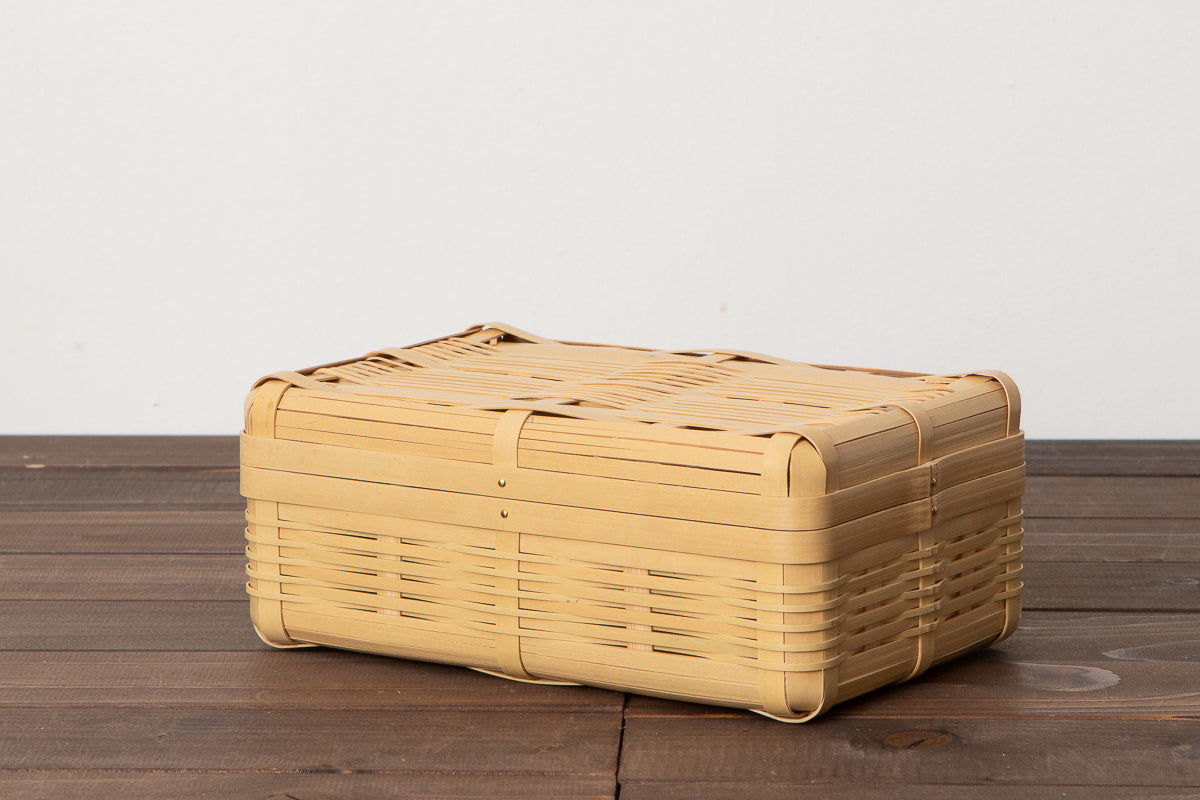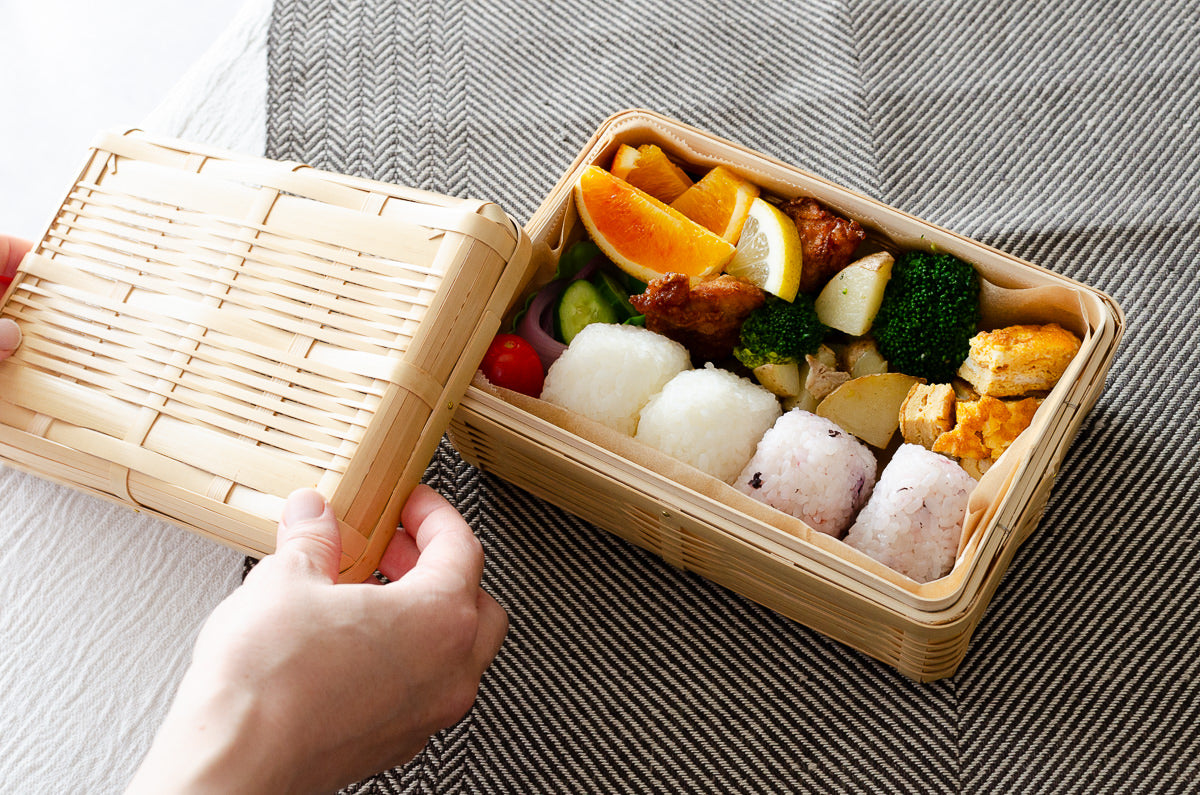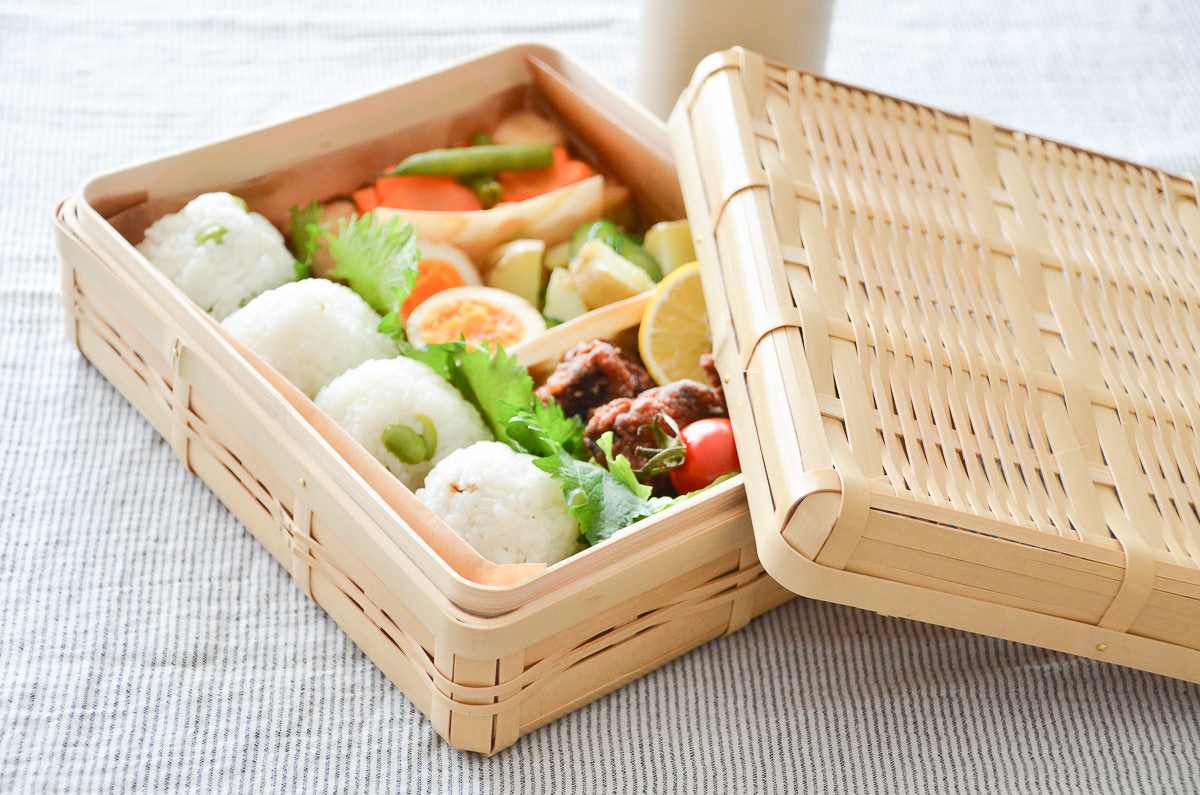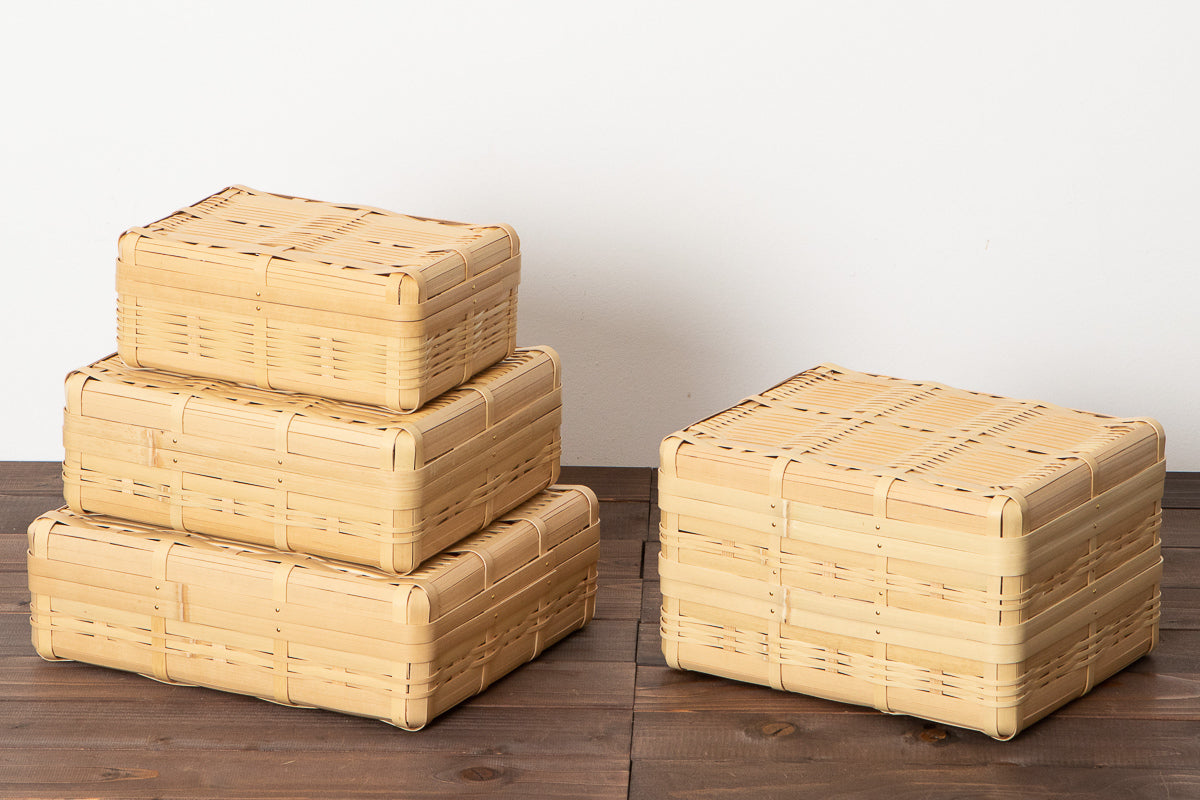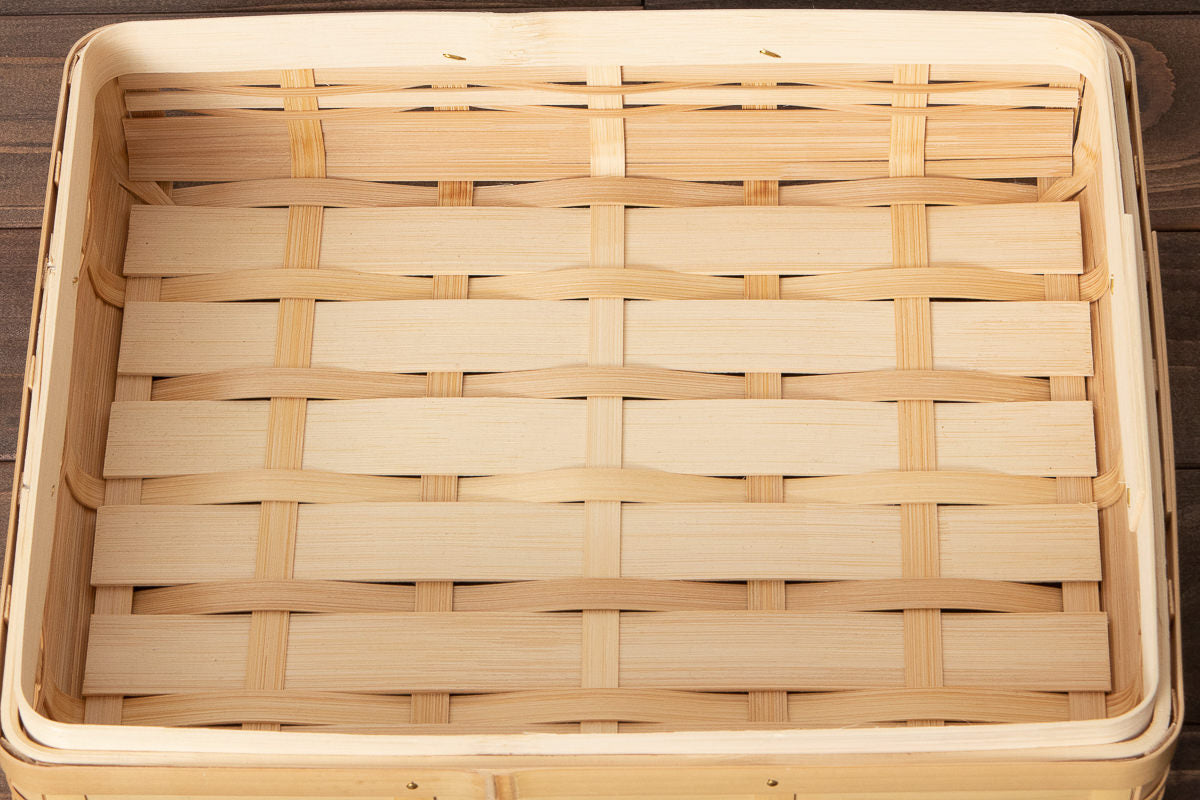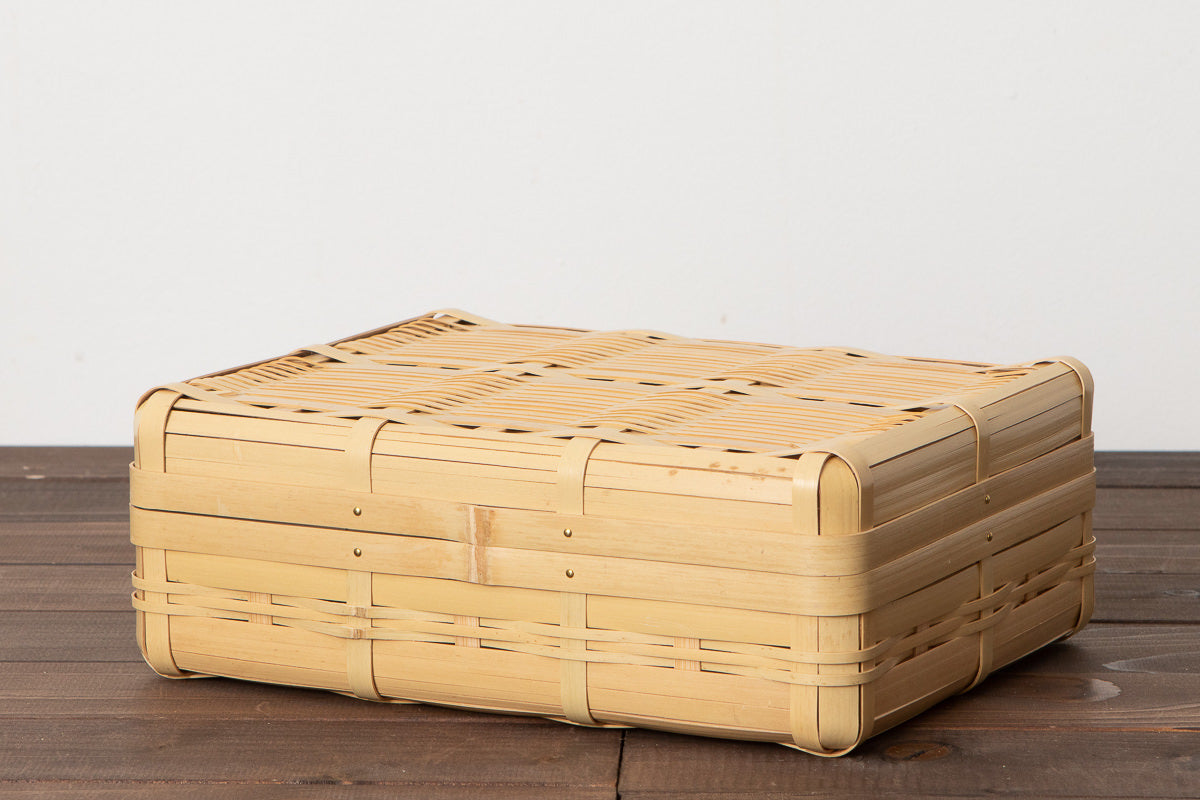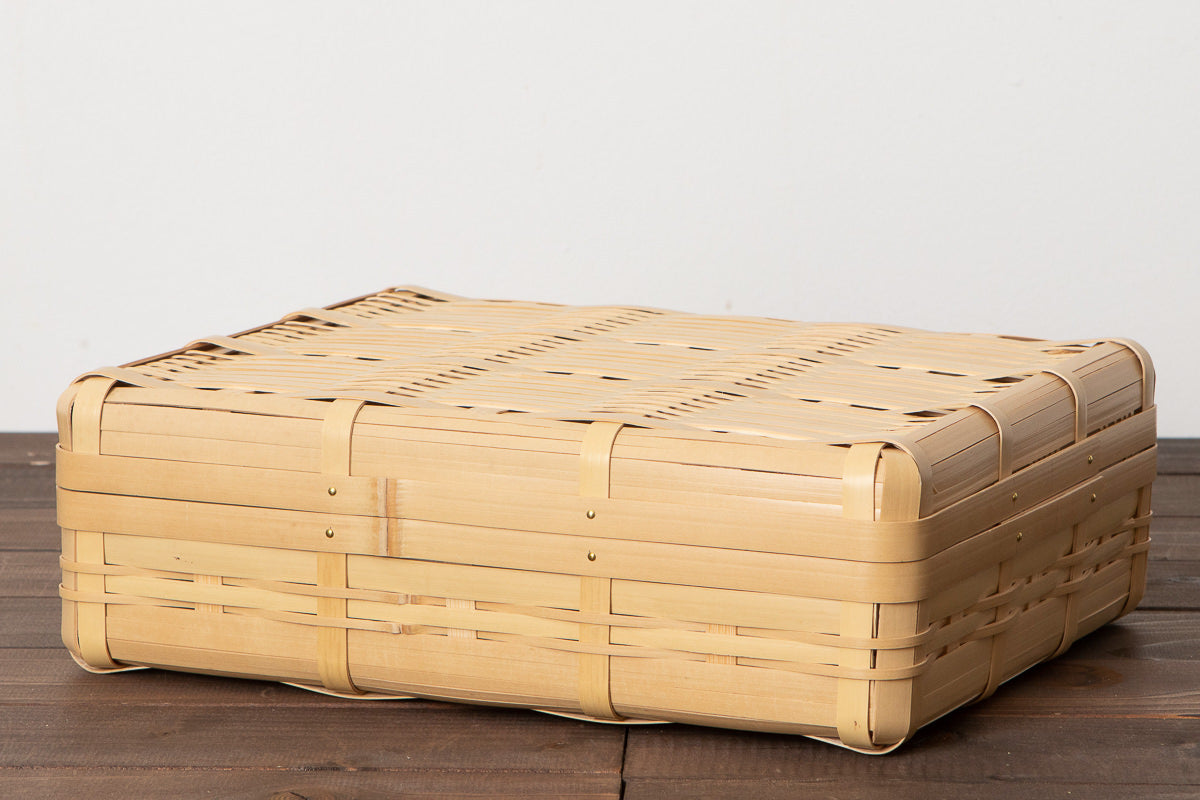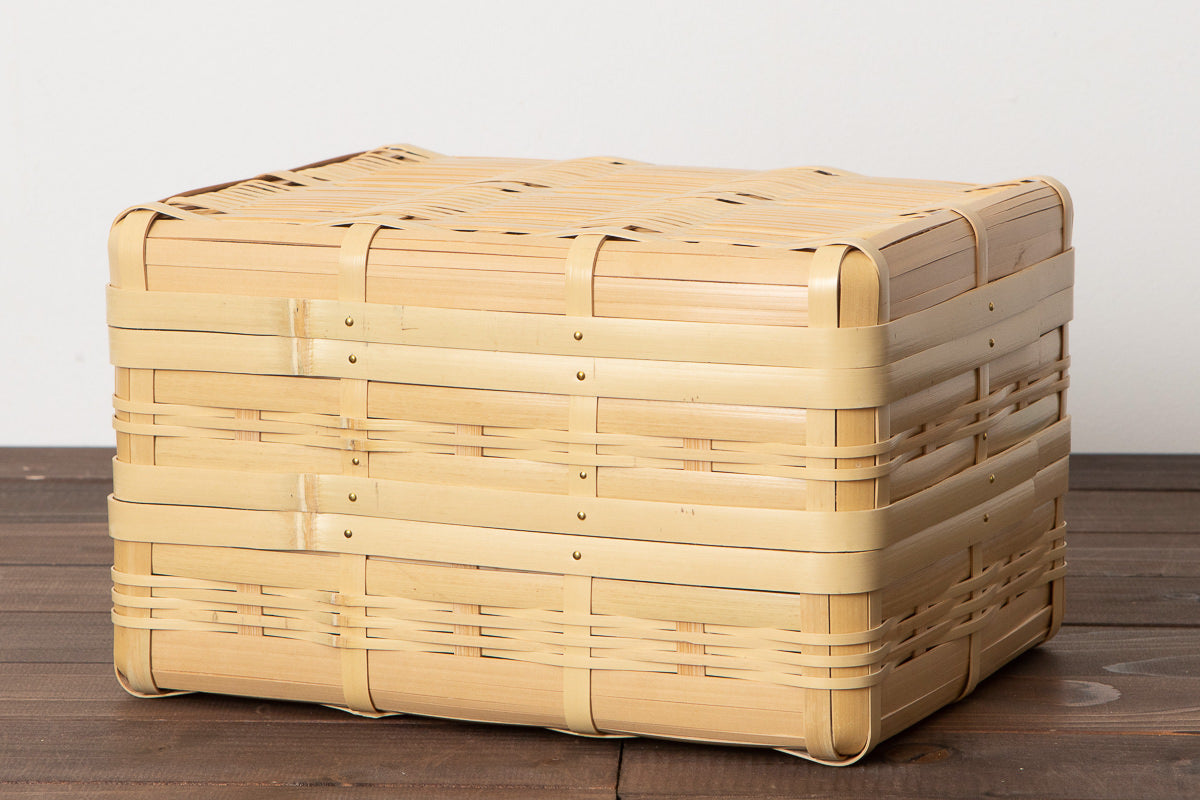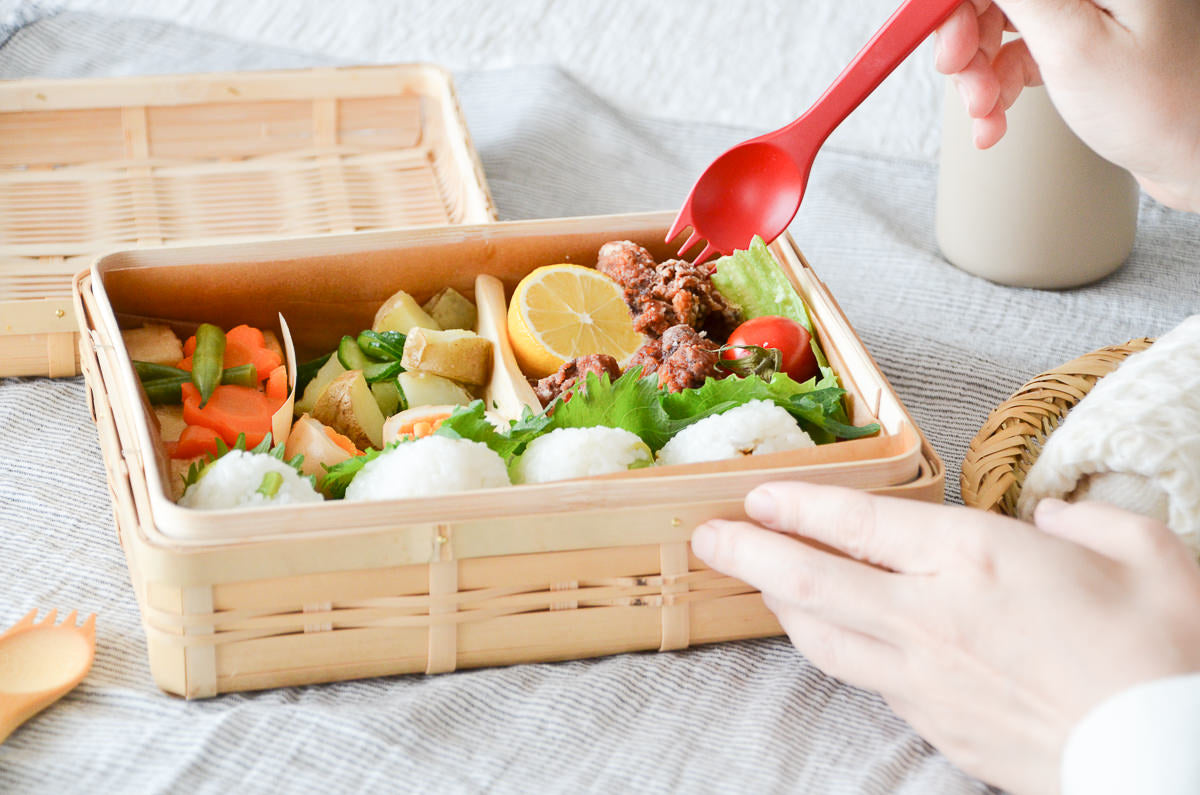Lunch Box / White Bamboo / Kagoshima-JPN 321103
Lunch Box / White Bamboo / Kagoshima-JPN 321103
Couldn't load pickup availability
- Size / Weight
- Medium: Approx. W 7.87″ × D 5.51″ × H 3.15″ / 6.00 oz
Large: Approx. W 9.45″ × D 7.87″ × H 3.15″ / 9.52 oz
Extra Large: Approx. W 10.63″ × D 8.66″ × H 3.54″ / 12.70 oz
Large 2-tier: Approx. W 9.45″ × D 7.87″ × H 5.51″ / 16.57 oz
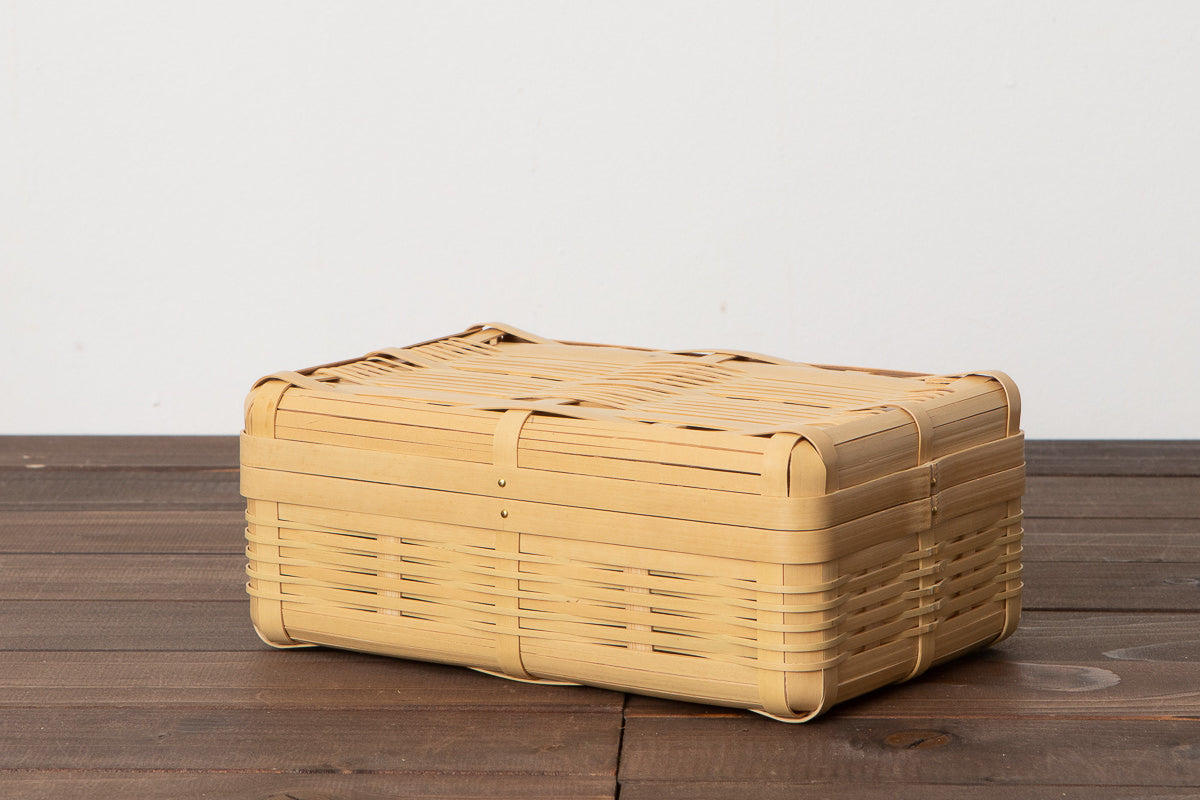
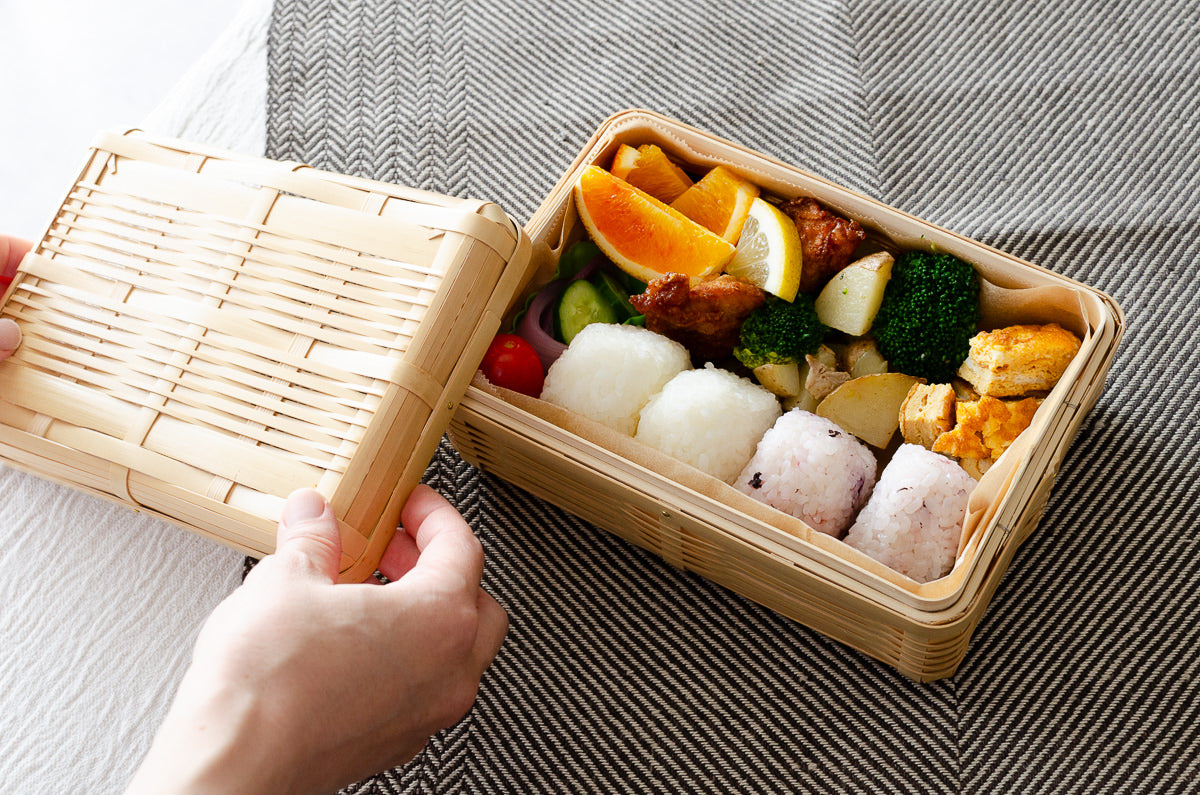
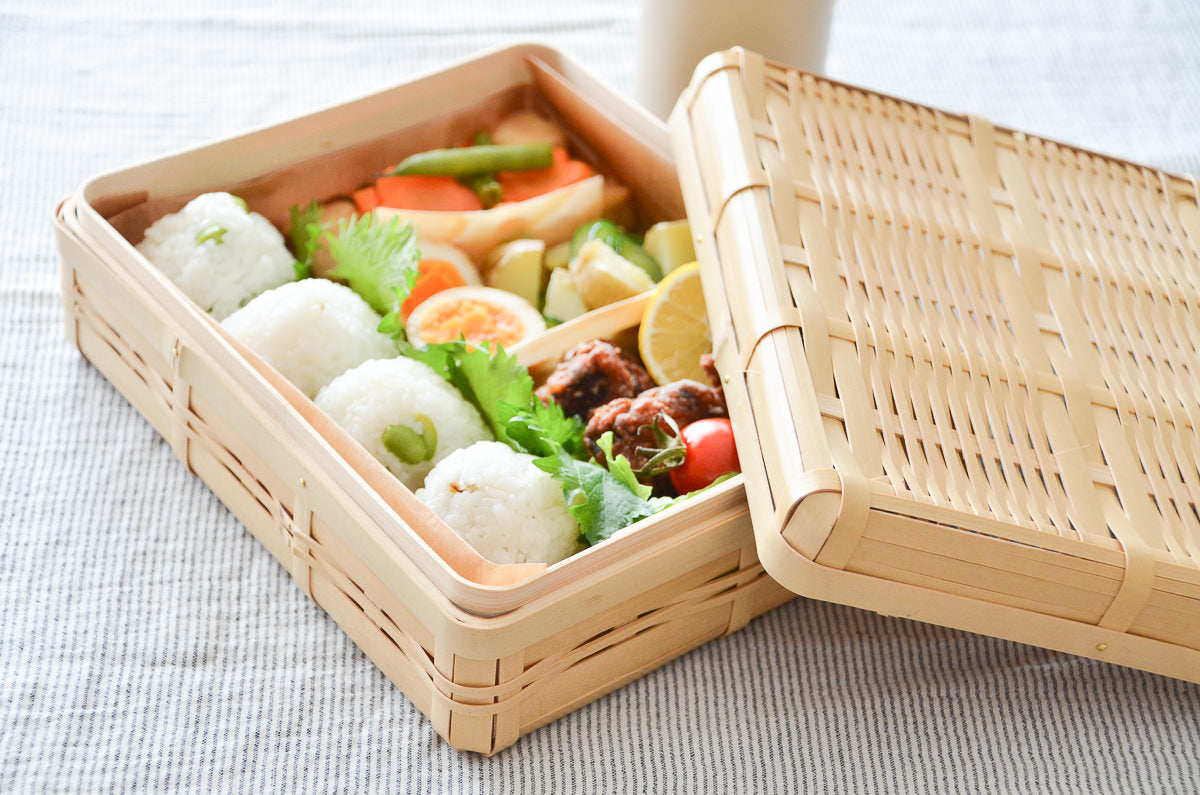
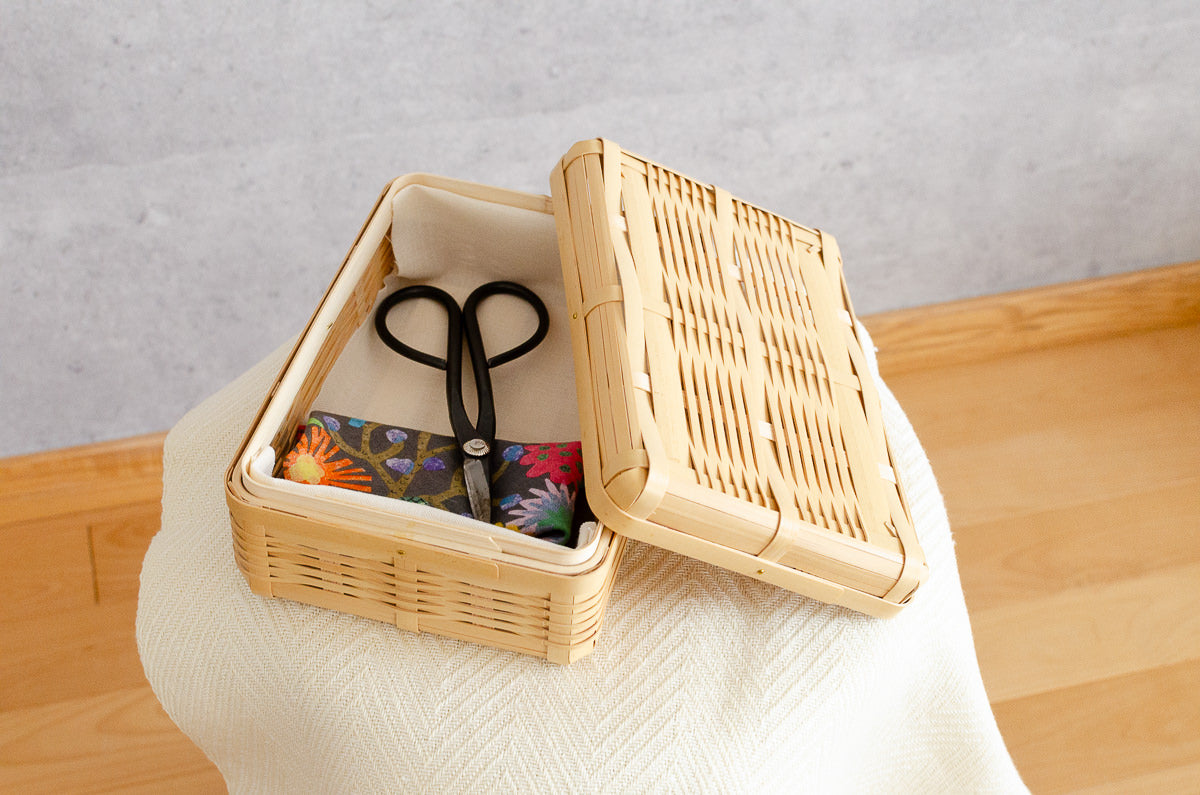
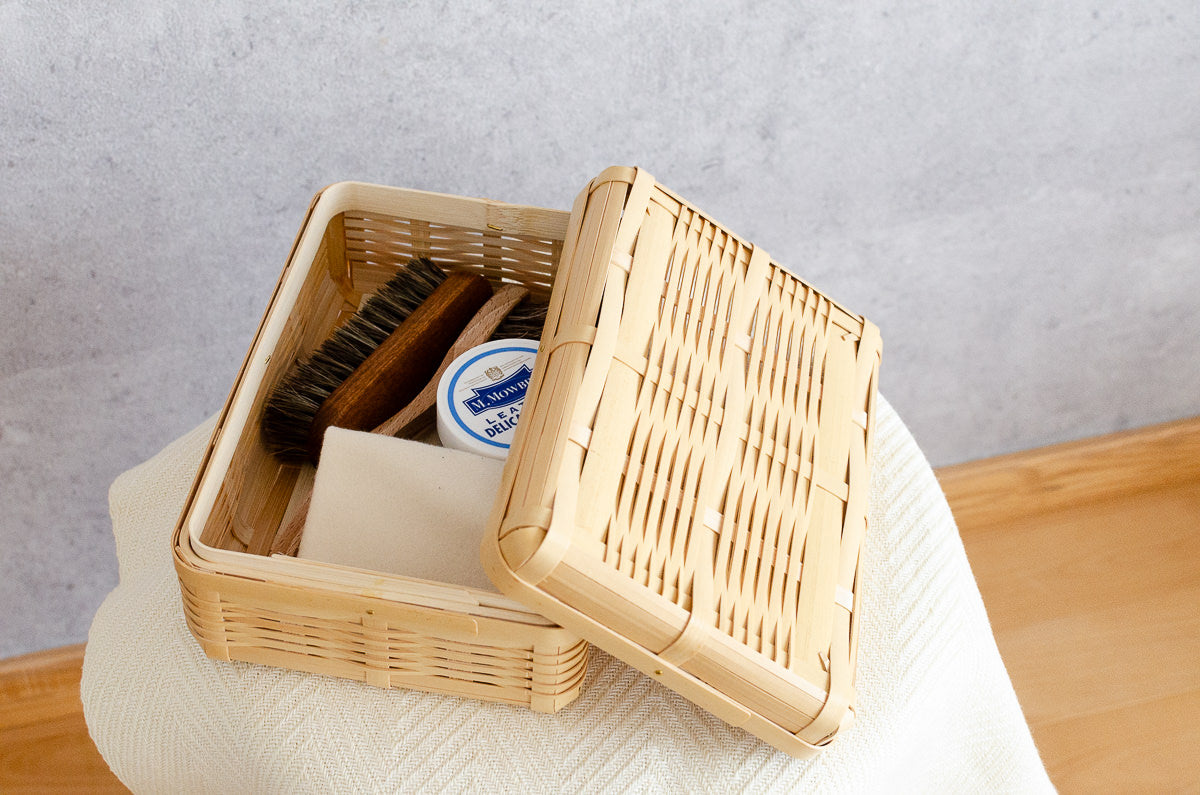
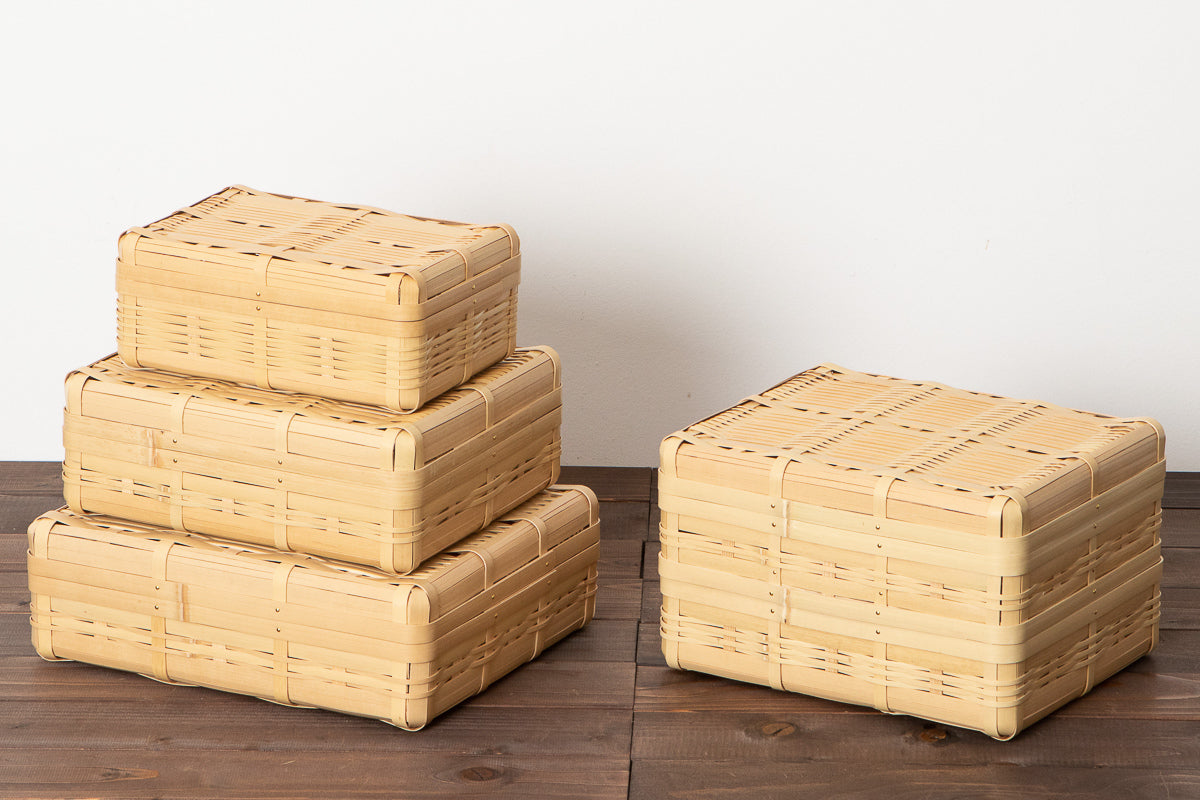
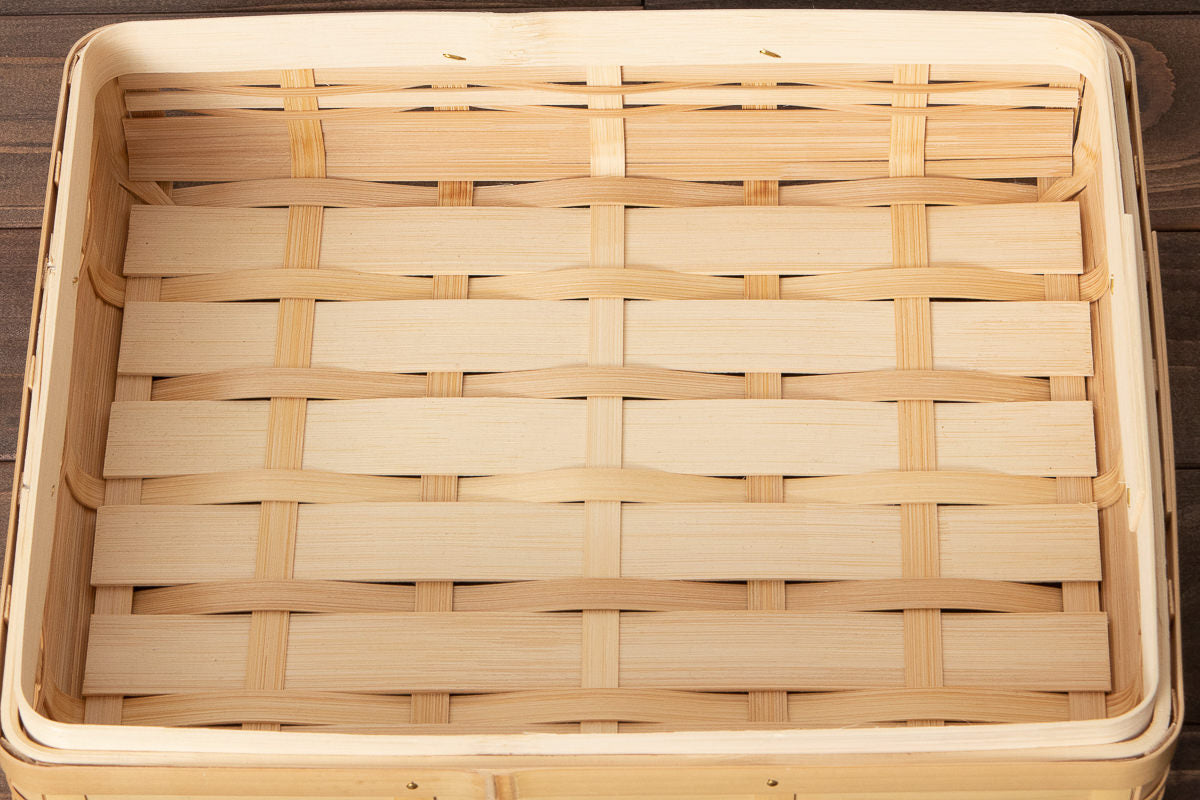
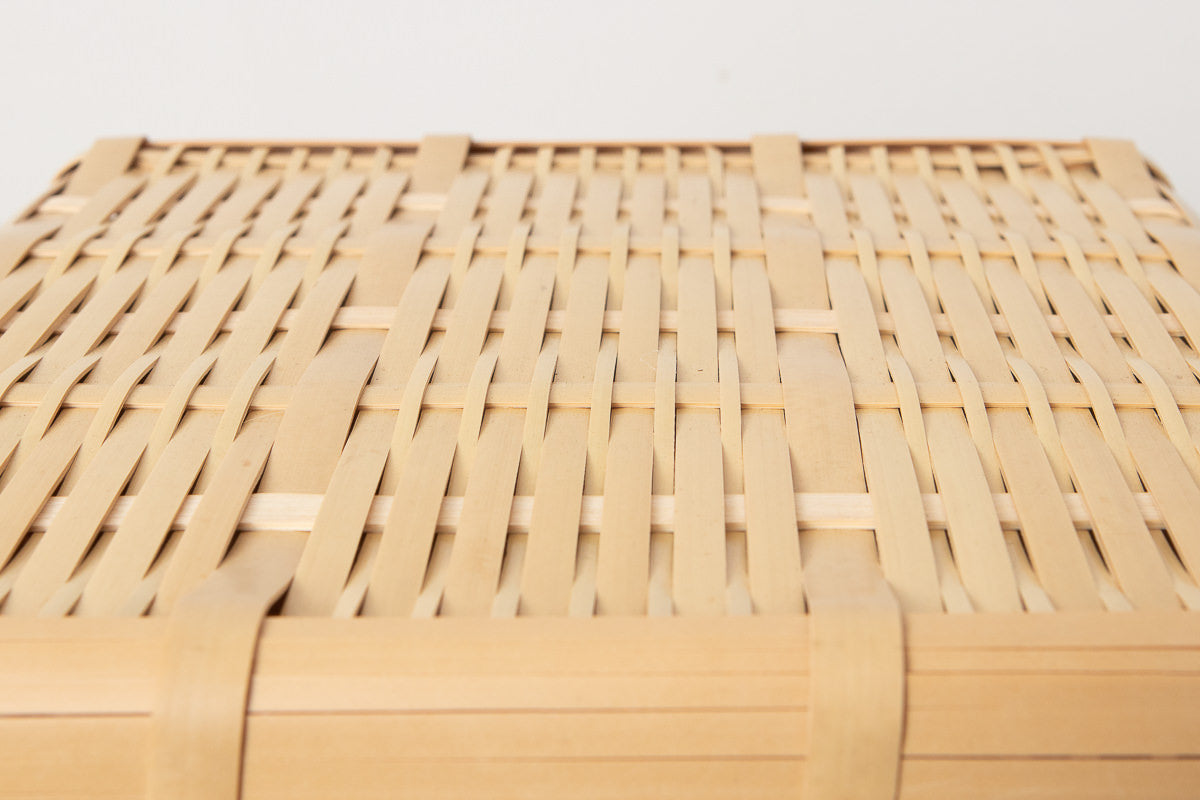
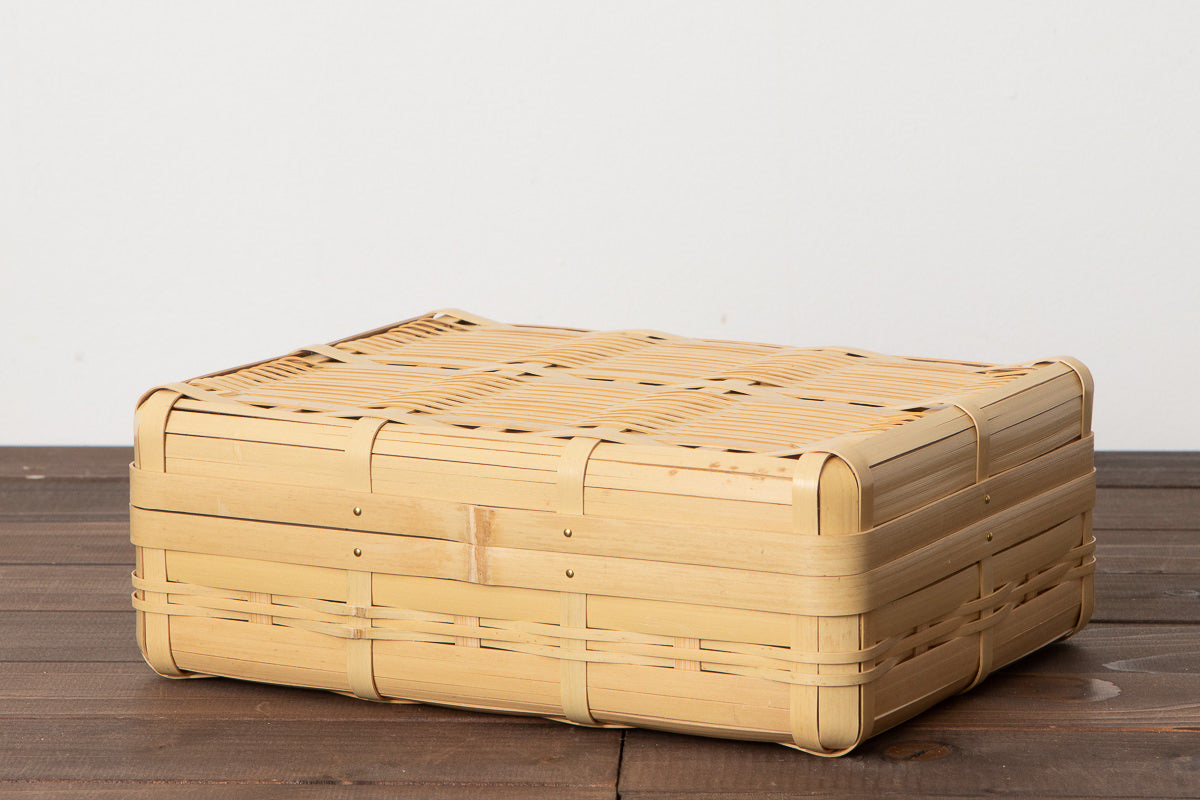
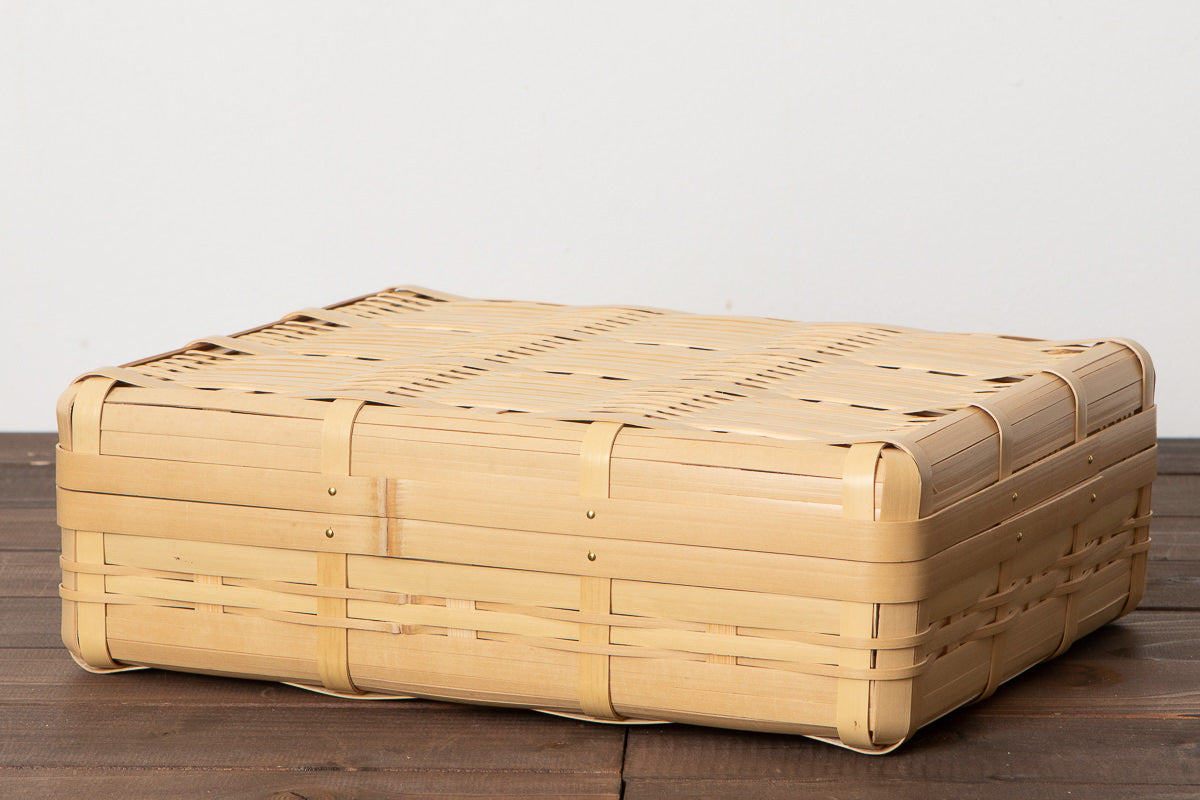
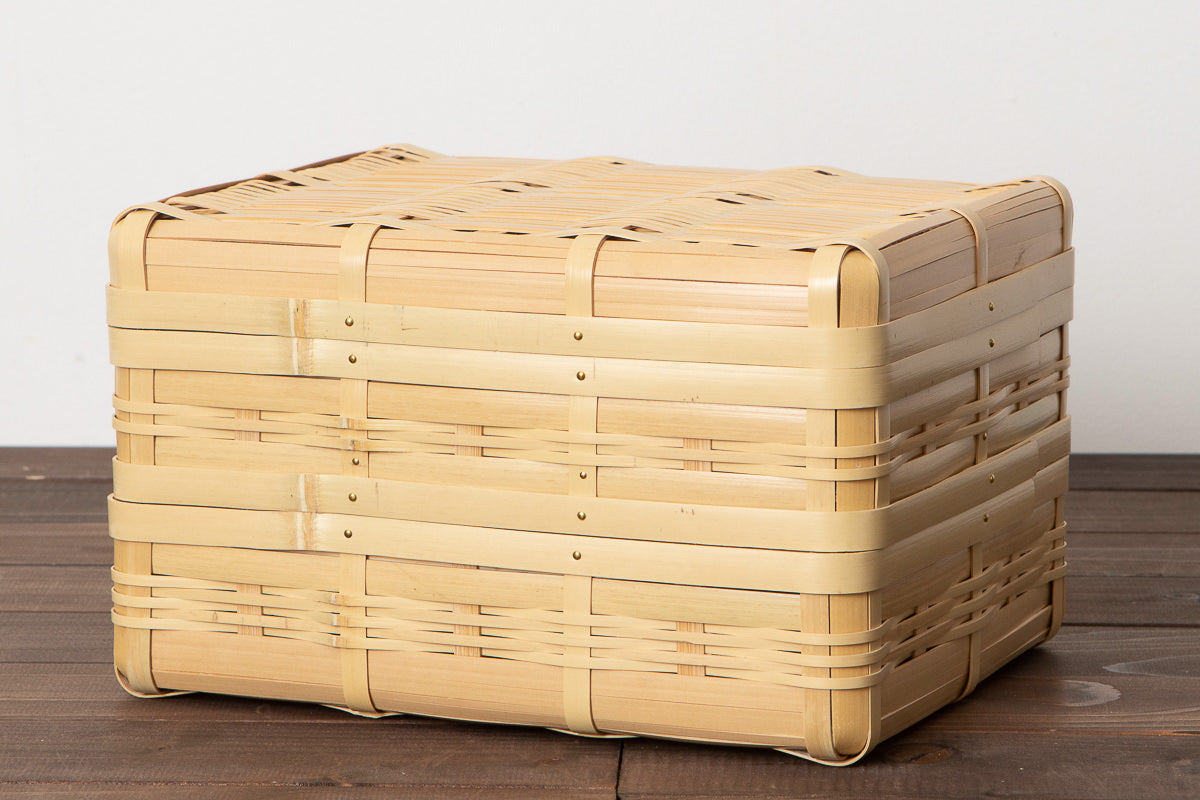
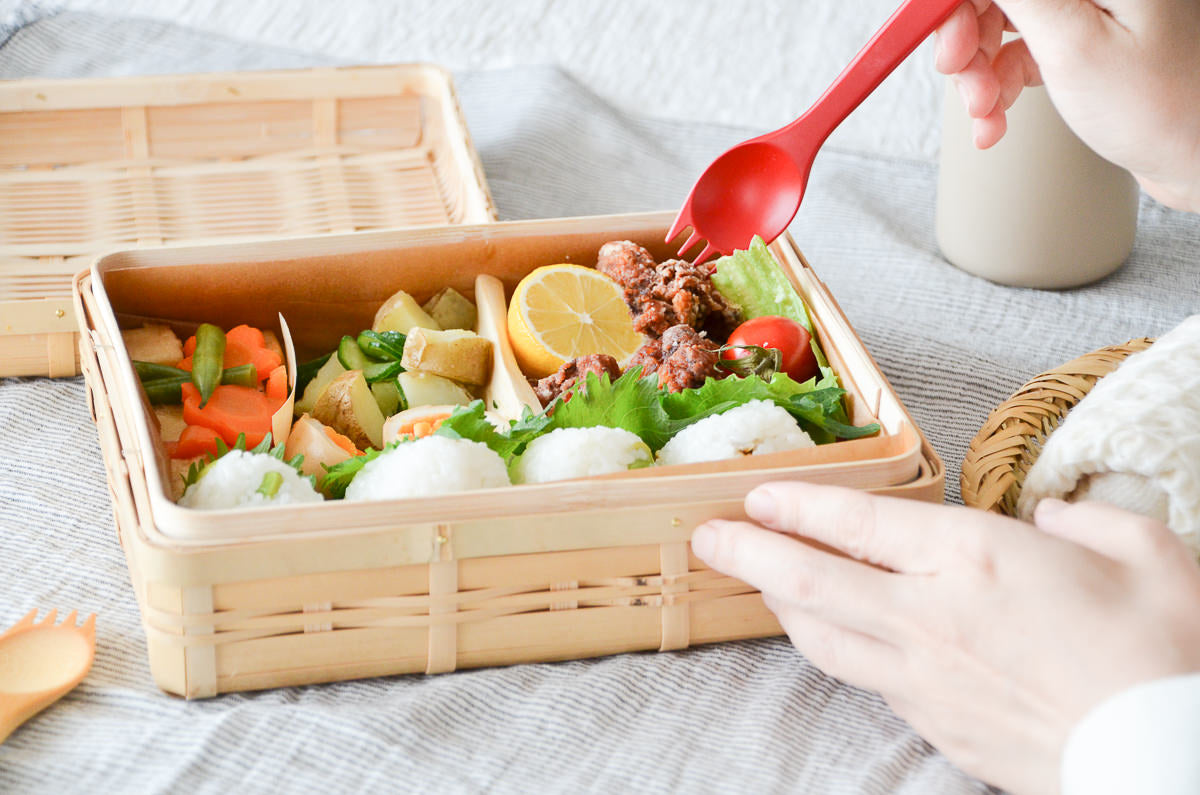
-
Note
The sizes shown above are the middle of the total quantity of items we receive, and are only a rough estimate.
Also, external dimensions are provided.
Some of them may be 2-3 cm (1inch) larger or smaller than the sizes indicated because they are handmade using natural materials.
If you have a specific place in mind where you would like to store the item, please order it with enough space to spare.
Also, the shape, texture, and color of each item will vary.
Please be aware of this before ordering. -
Caution
Please be careful not to damage your body or clothing with sprinters.
For all materials, please store in a well-ventilated place and avoid storing in cupboards, etc. as much as possible.
When storing, it is best to avoid direct sunlight and to place them in an elevated place where moisture does not accumulate.
If the product gets wet from rain or water, wipe it off with a dry cloth and dry it well in the shade or indoors in a well-ventilated location.
Regular brushing with a scrubber or brush is recommended to prevent dust accumulation.
-
Shipping
We deliver products worldwide. Shipping costs are automatically calculated according to your location and what you order.
We will ship with care and attention.You can see shipping policy here
-
How to care
These products are made from all-natural materials and if taken good care of they will last for dozens of years. Products made of natural materials also change beautifully over time.
Check "How to care" page here
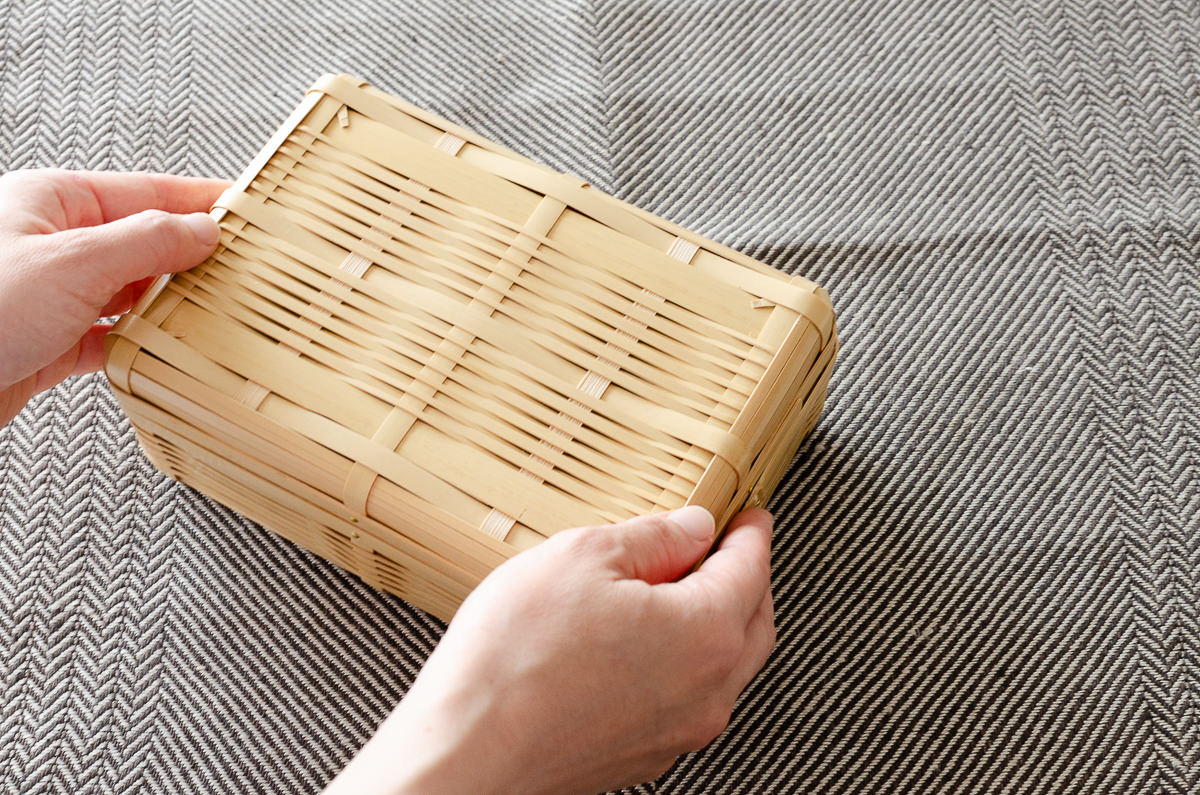
This is a lunch box made from white bamboo.
In the past, smaller versions of this type were commonly used as lunch boxes for children in the Kyushu region.
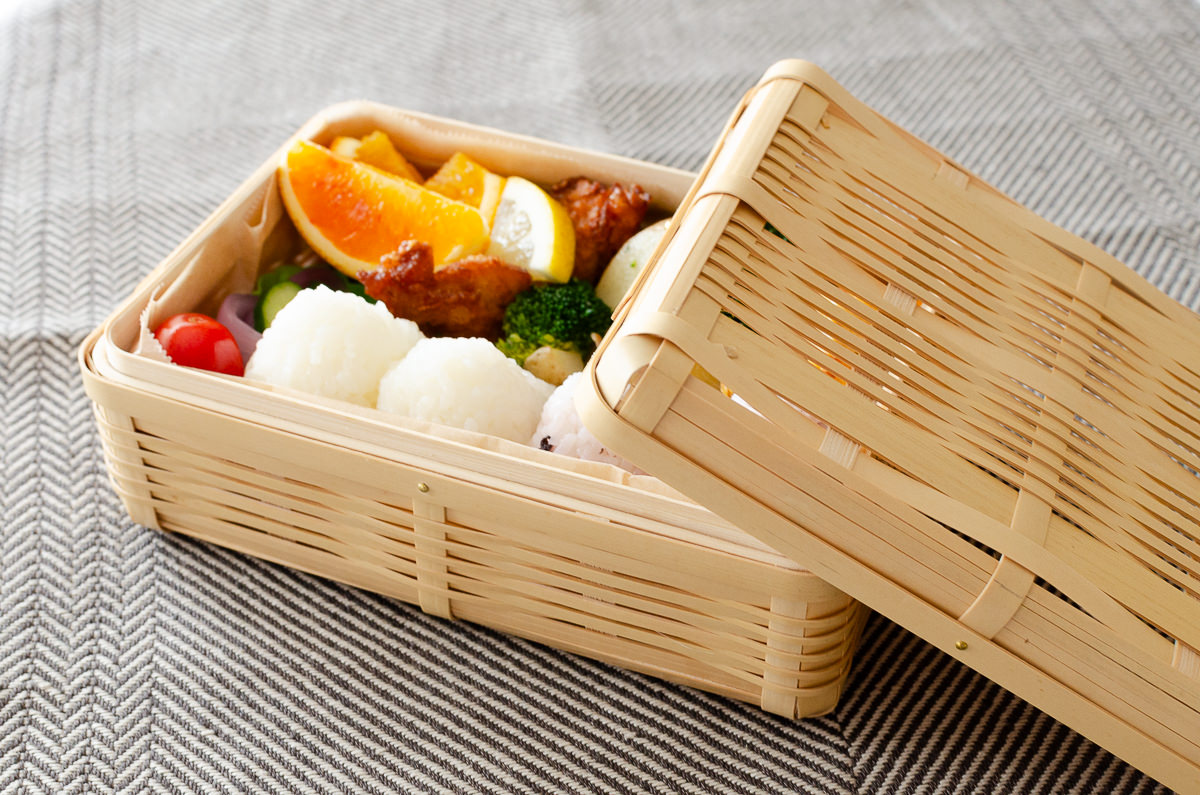
Kyushu is known for producing high-quality Madake bamboo, and this lunch box is also made from white bamboo—Madake harvested in Kyushu and treated to lighten its color.
White bamboo is created by boiling fresh green Madake and drying it in the sun to remove oils and moisture, resulting in a pale finish.
The whitening process evens out the color, reduces the risk of insect damage, and tightens the bamboo fibers, making the material more durable.
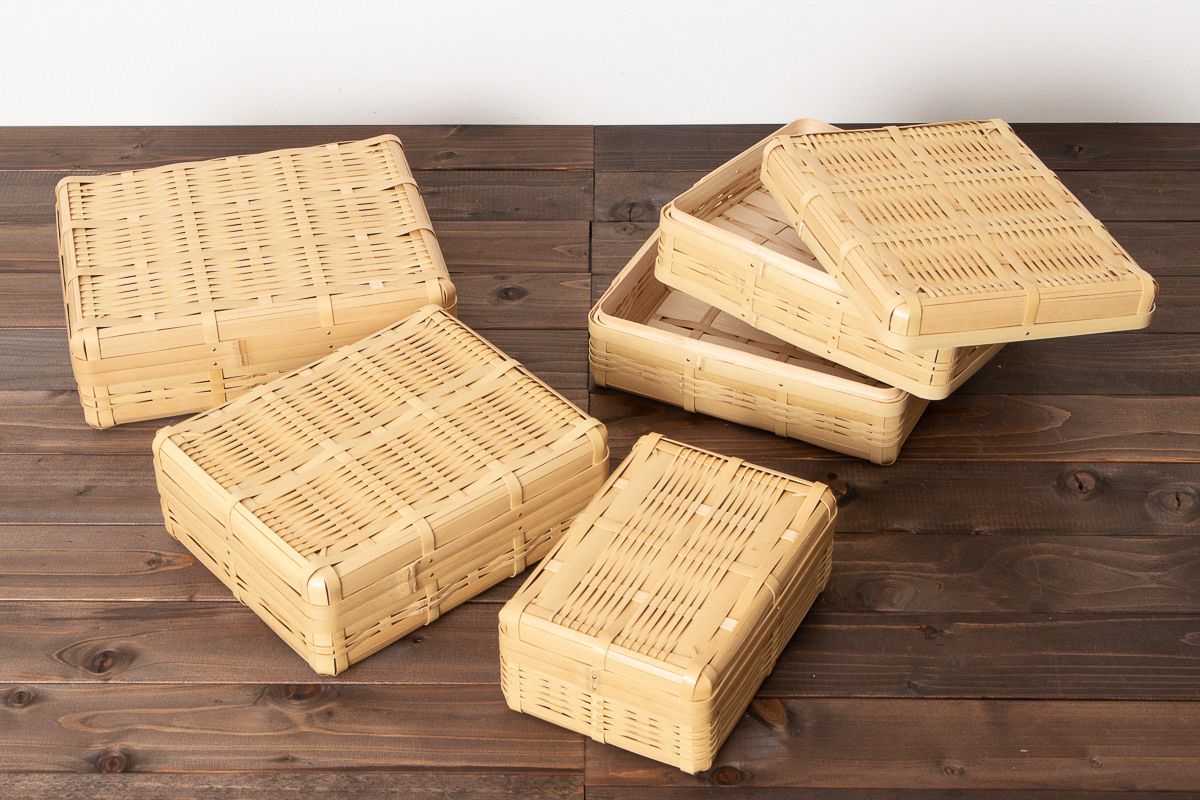
This page features four larger sizes of this basket.
Starting with the “Medium” size shown at the bottom center of the photo,
you’ll see the “Large,” “Extra Large,” and “Large 2-tier” sizes arranged clockwise.
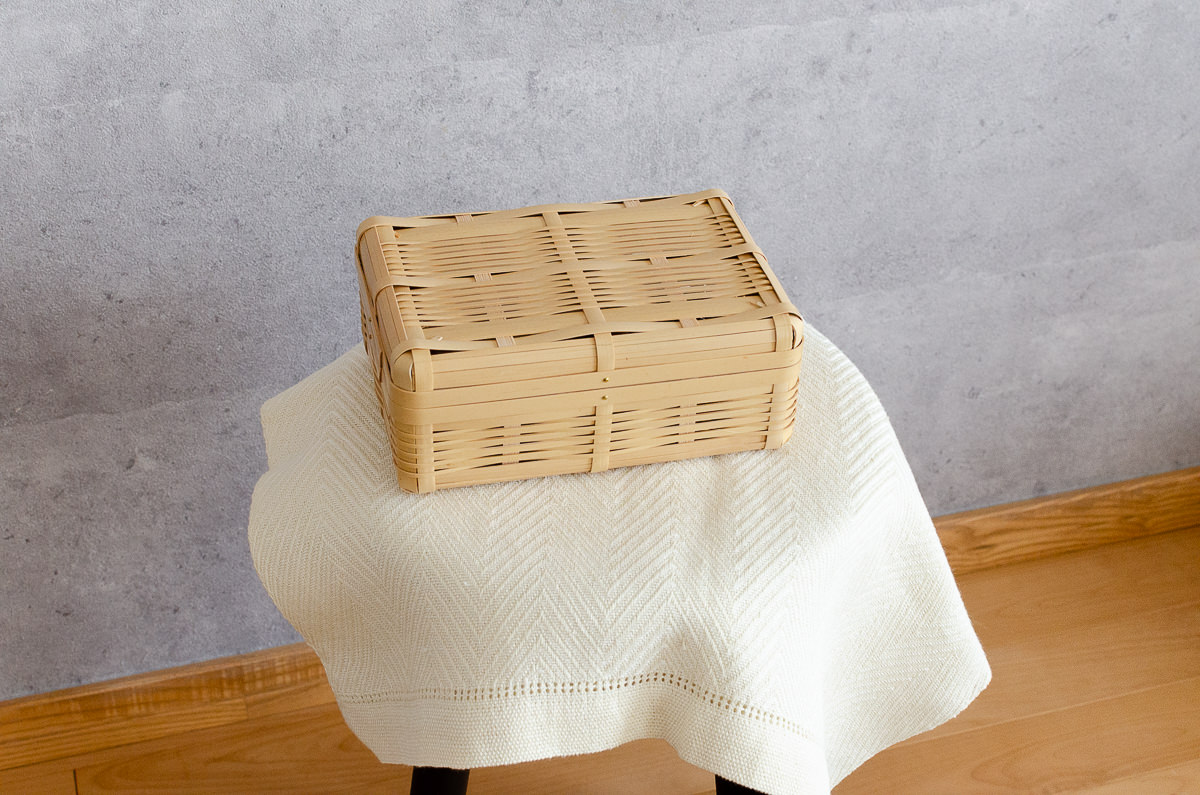
This lunch box consists of a lidded top and a basket base.
Woven bamboo containers like this are breathable and practical,
but today, very few artisans still produce them.
Rectangular baskets like this are generally referred to as Kakumono (literally, “square things”).
Many craftspeople who make Kakumono specialize exclusively in this form.
That’s because the techniques required are fundamentally different
from those used to make round or oval-shaped baskets, which are more common.

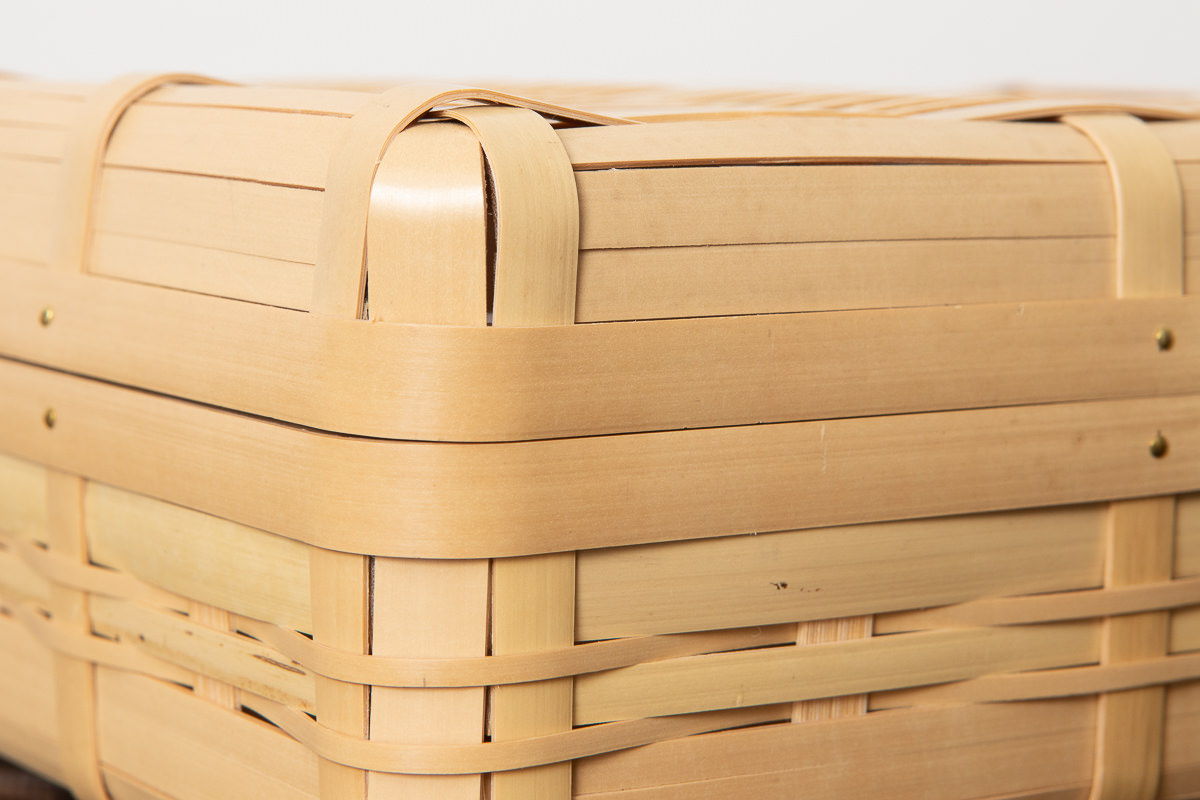
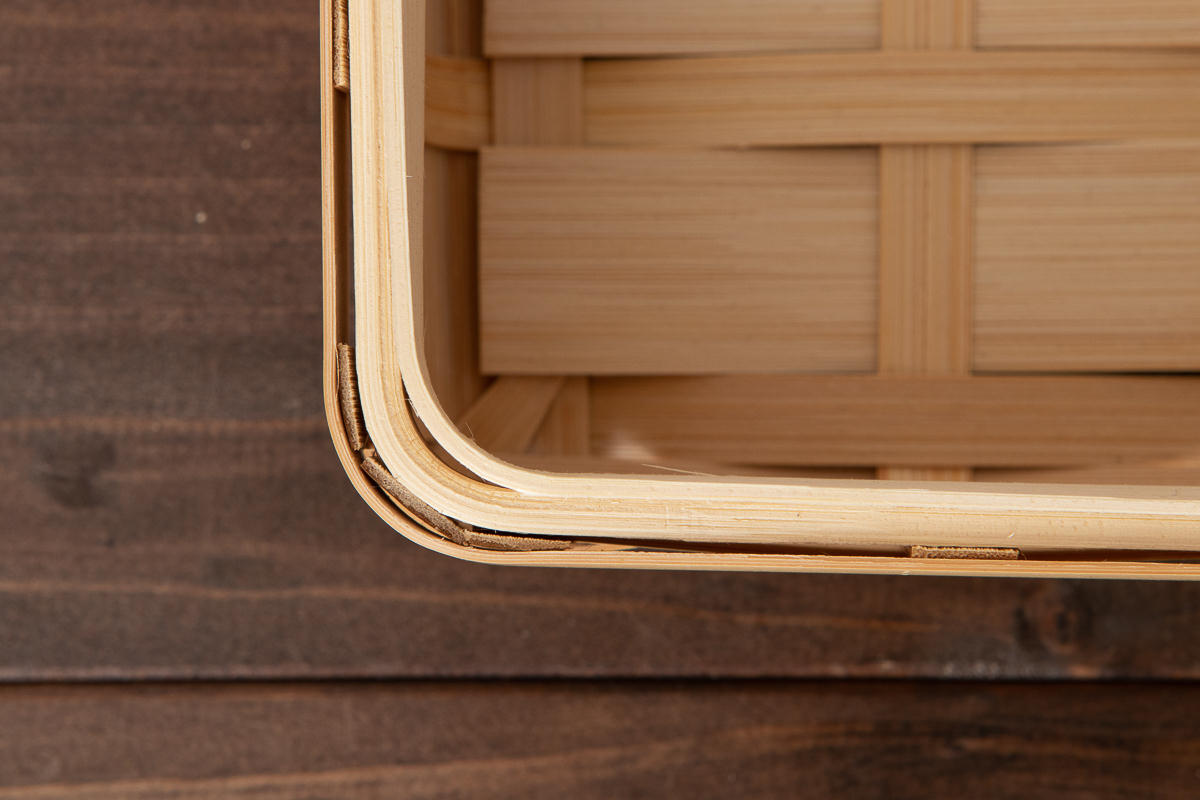


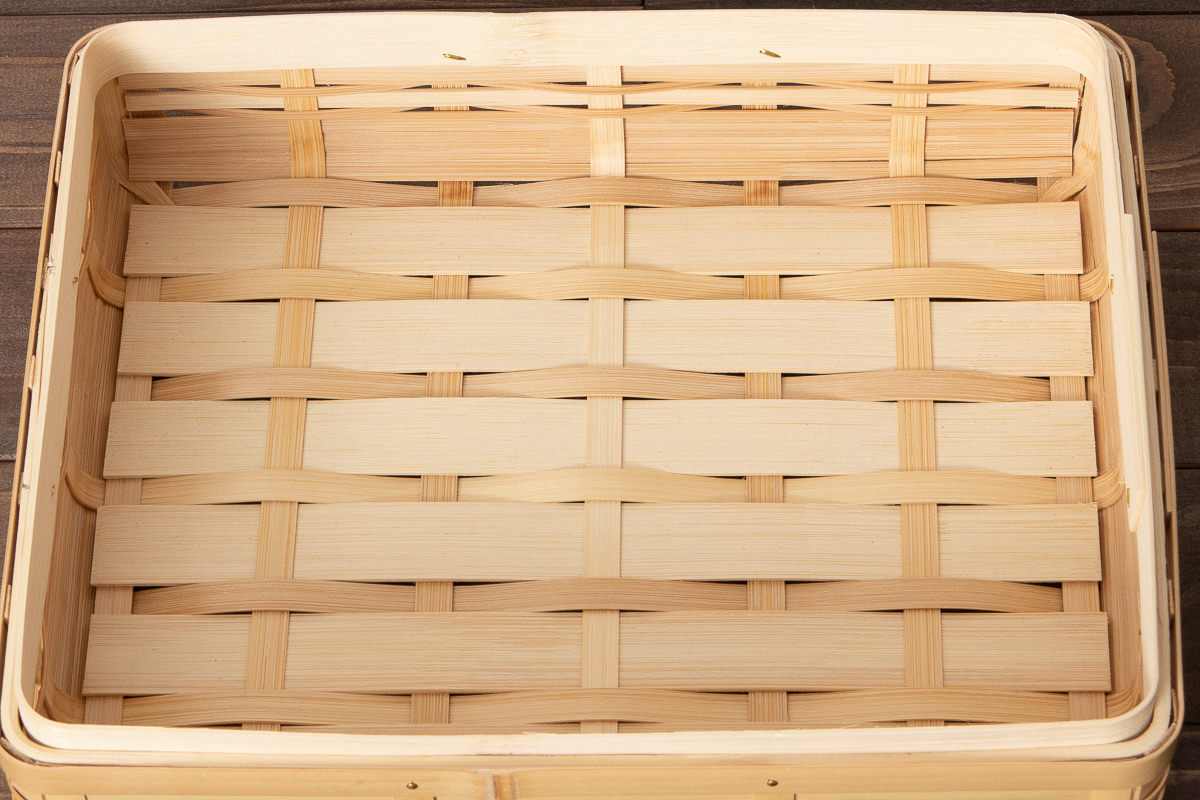
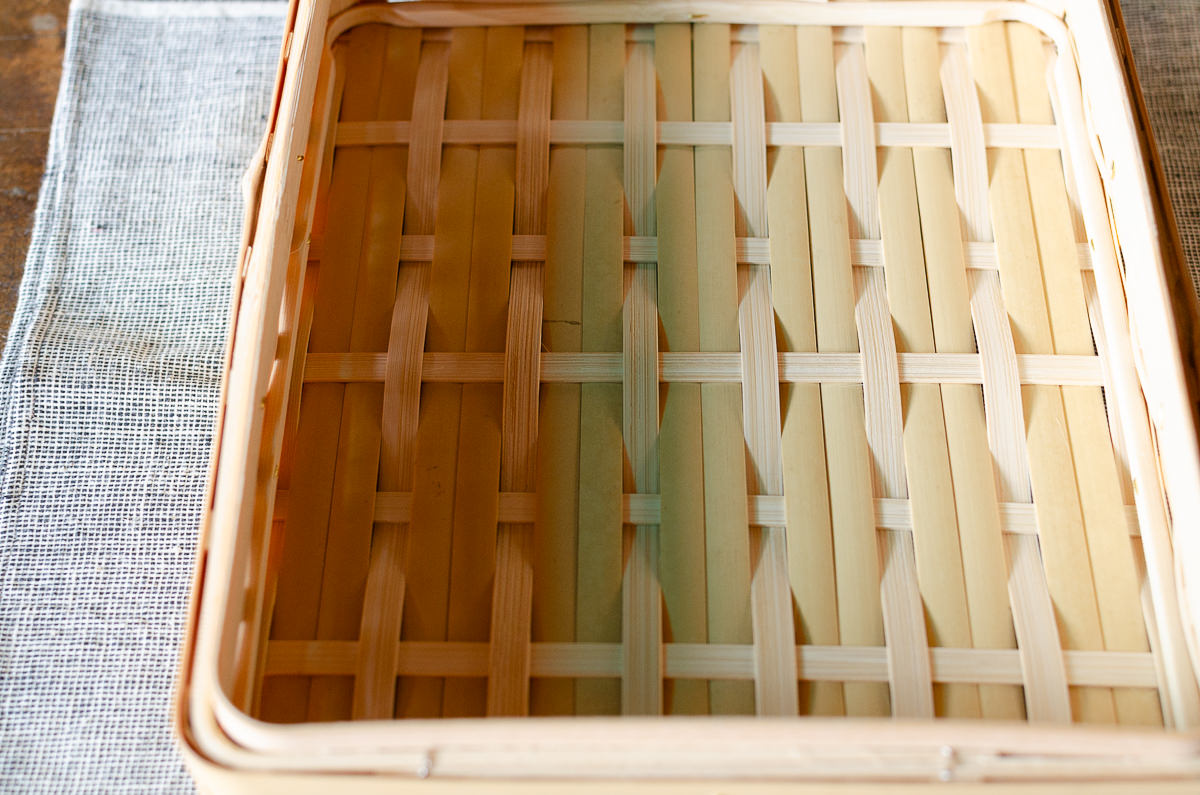

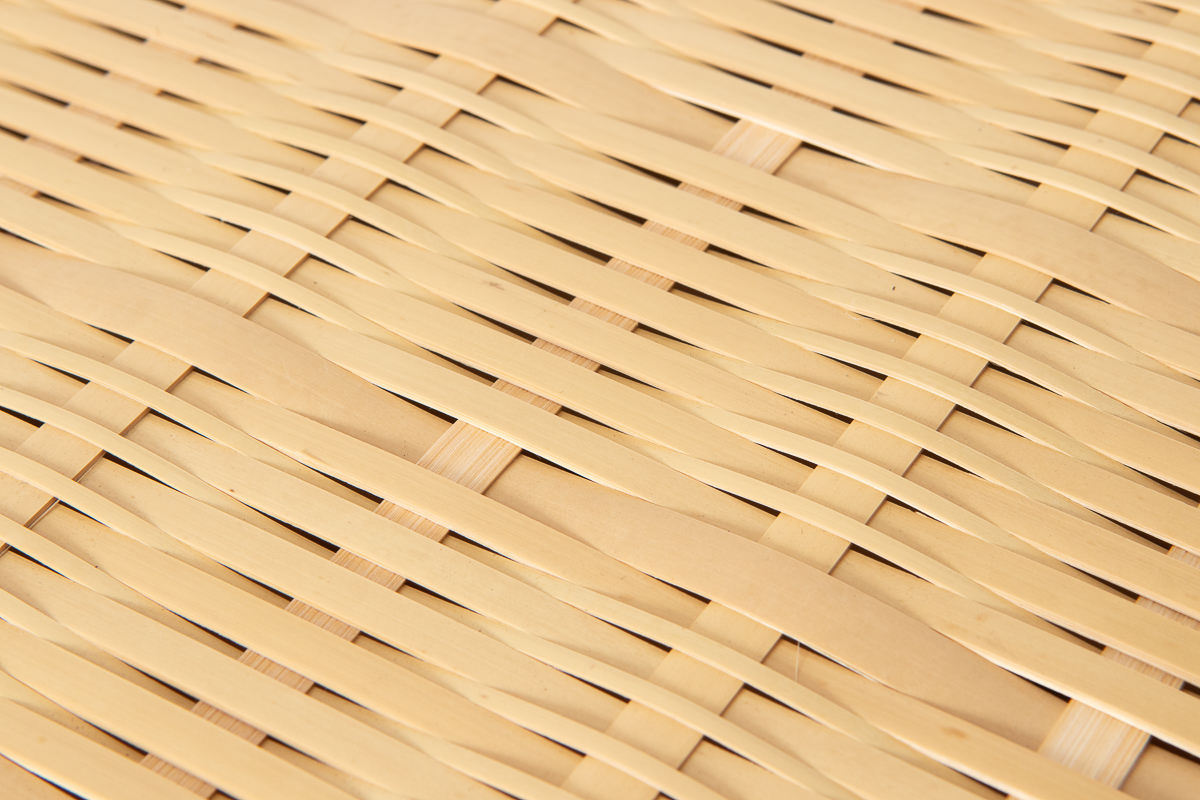

Rather than “woven craft,” this could almost be called assembled bamboo work—
the construction method is truly different from most other baskets.
It is a basket unlike any other.
The way the bamboo strips are precisely joined and composed in this lunch box
evokes a solid, structured beauty—something quite distinct from the softness of other woven baskets.

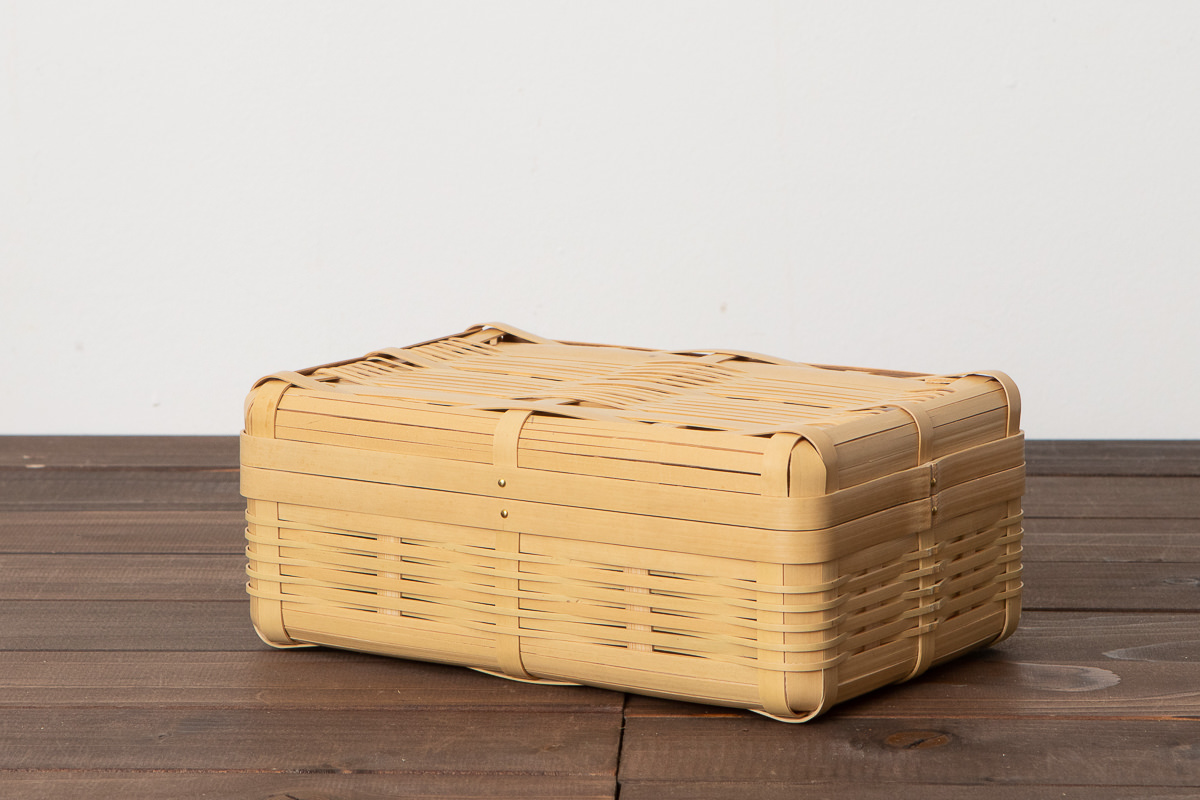

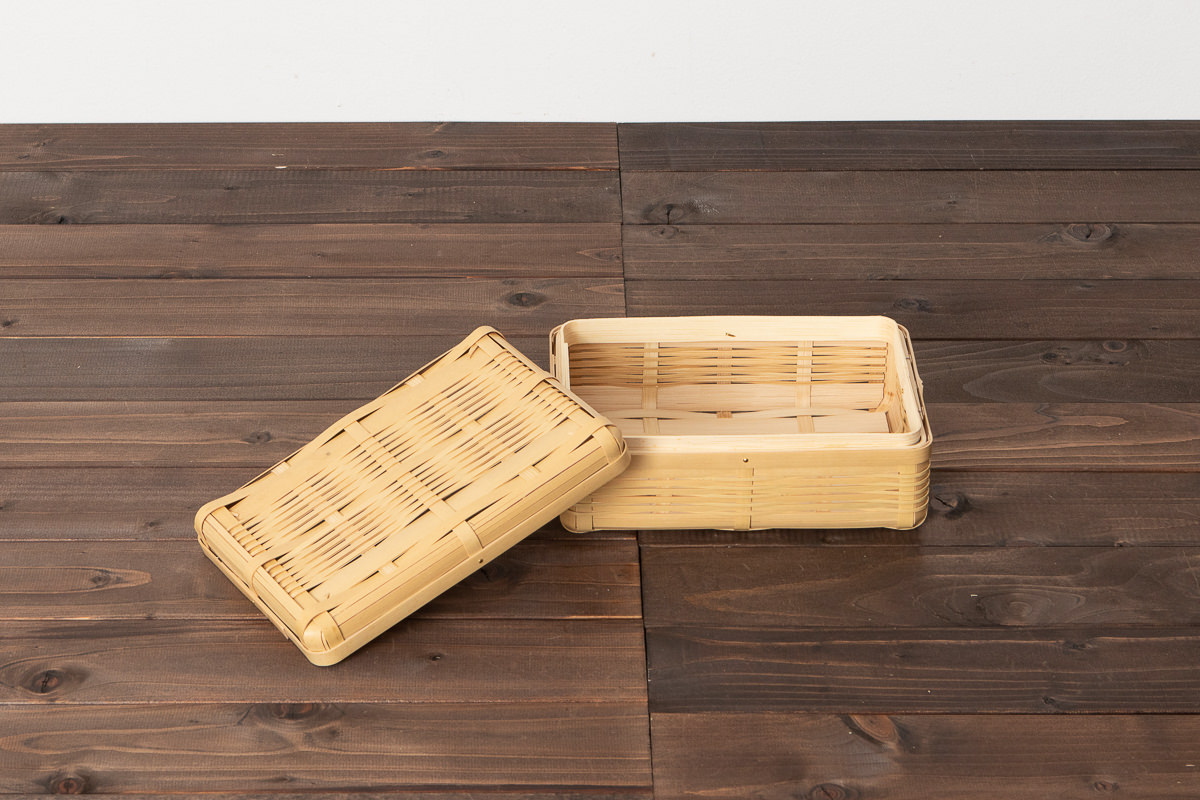
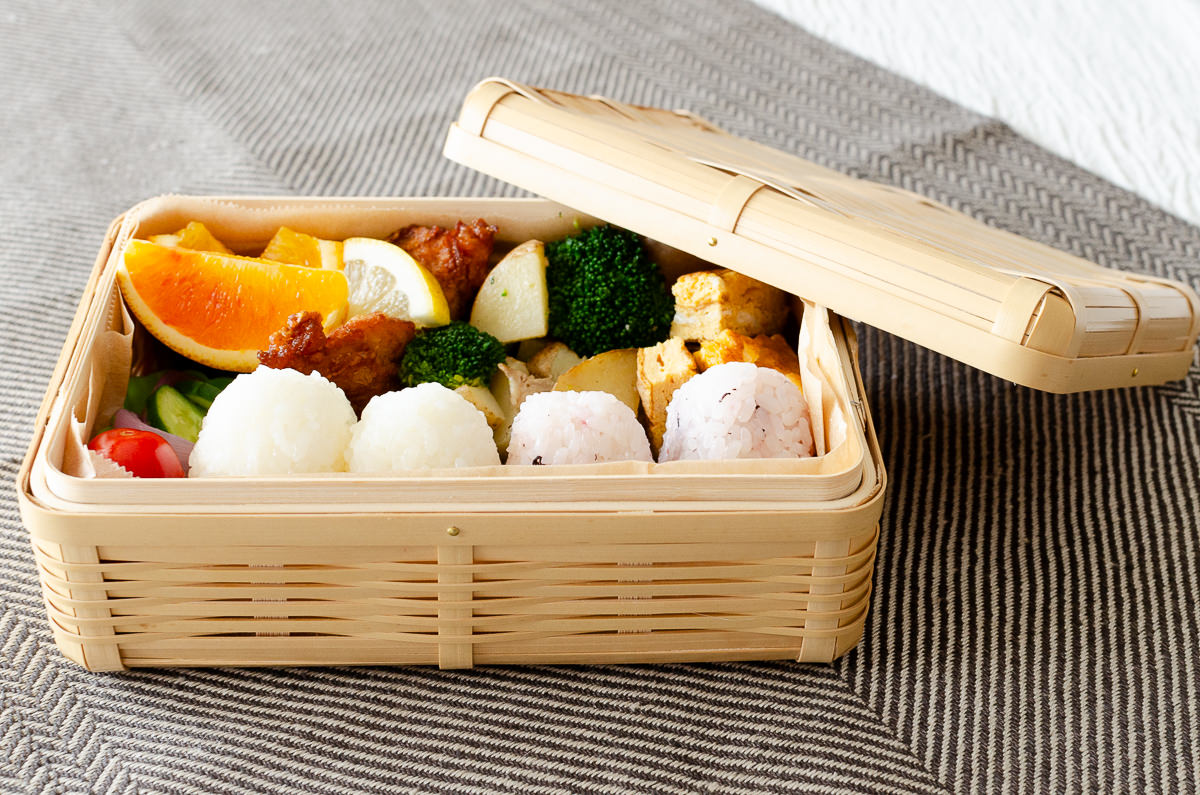
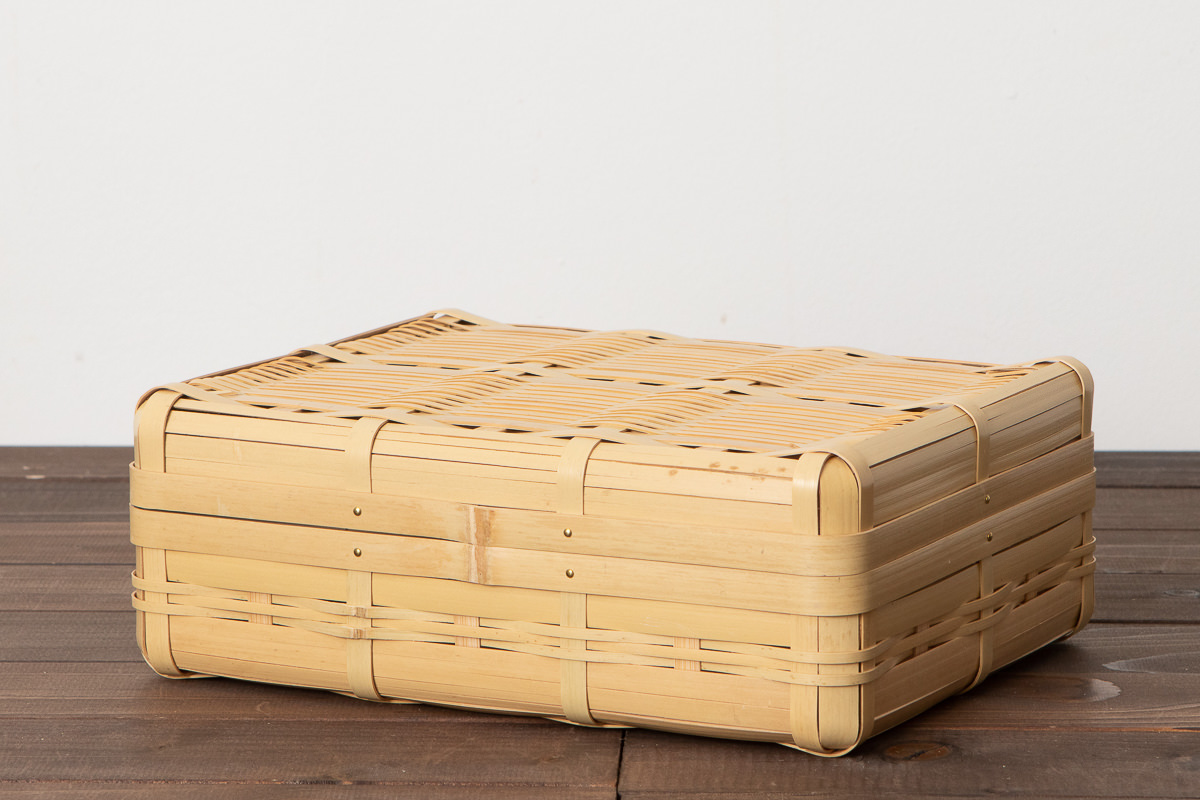
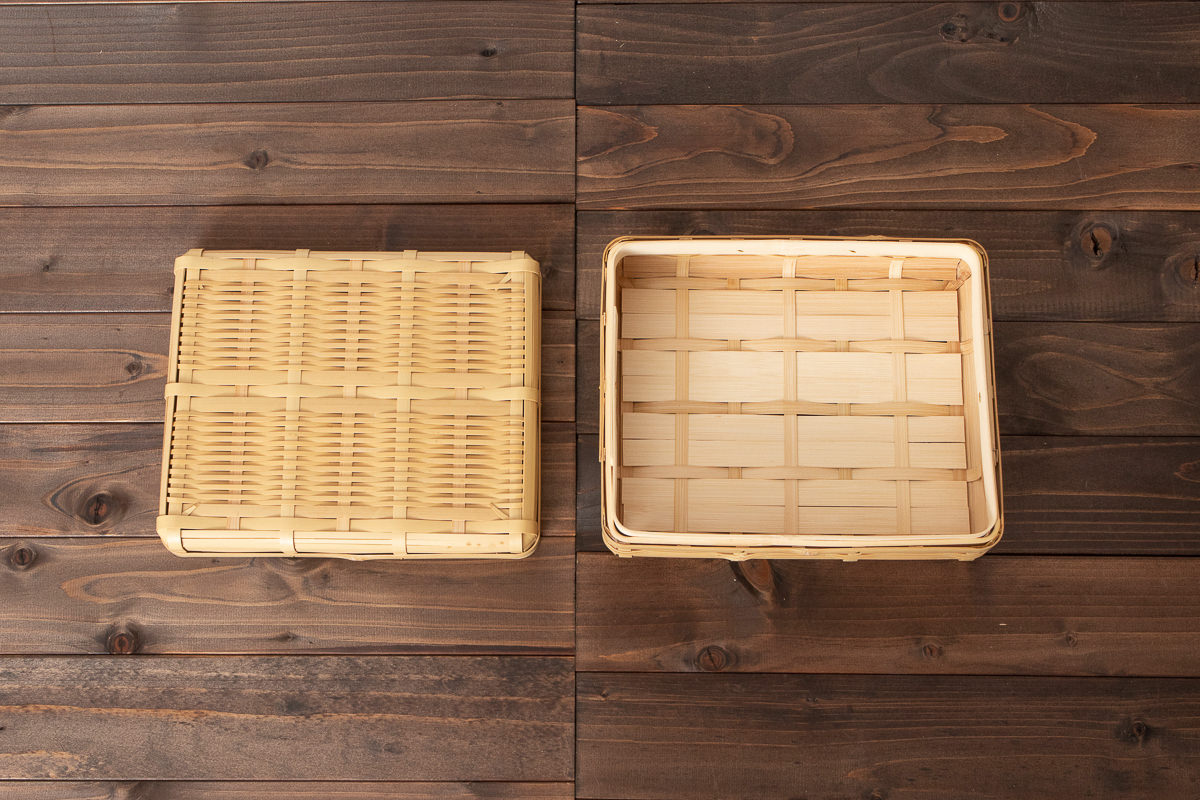
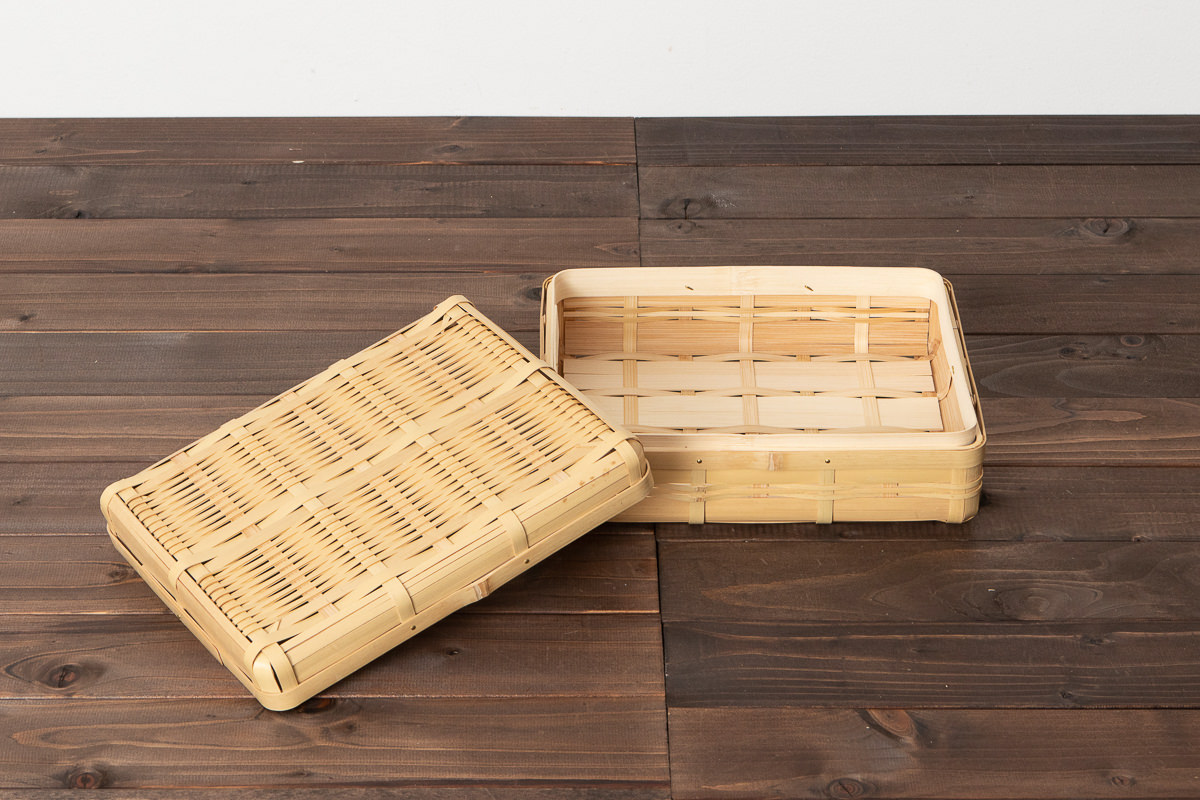
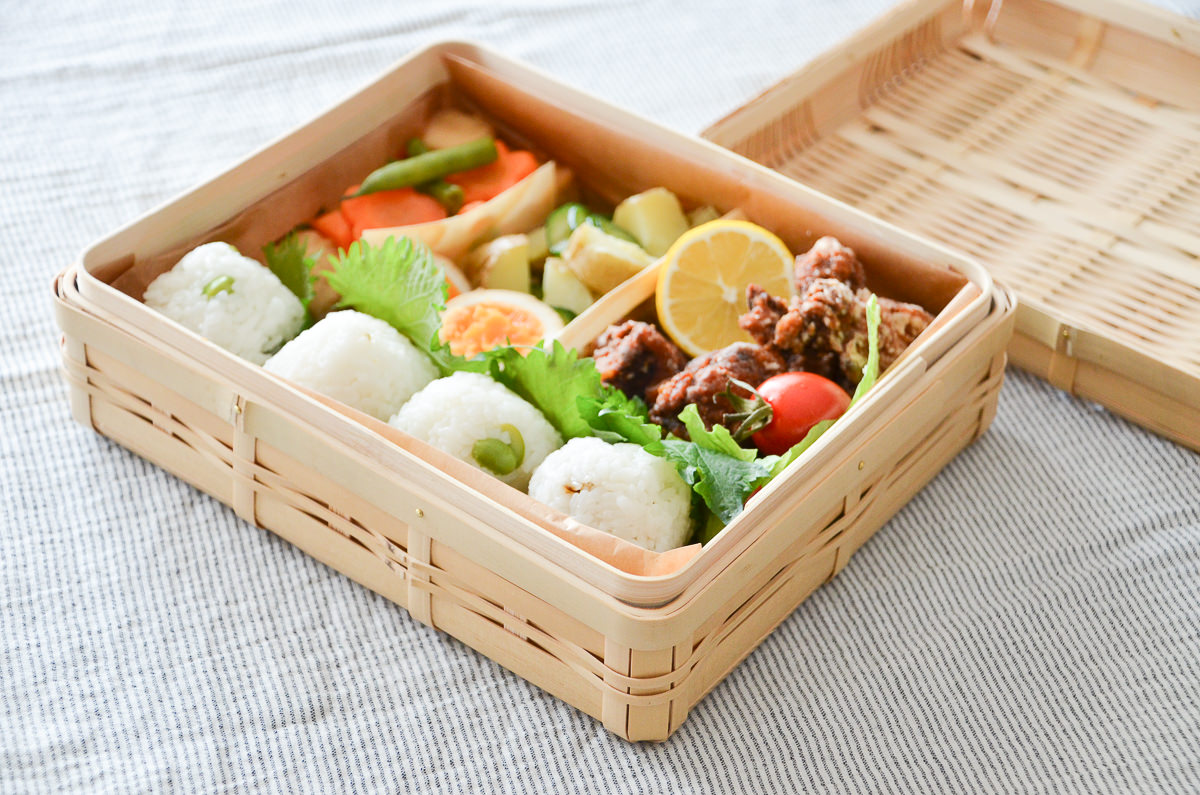
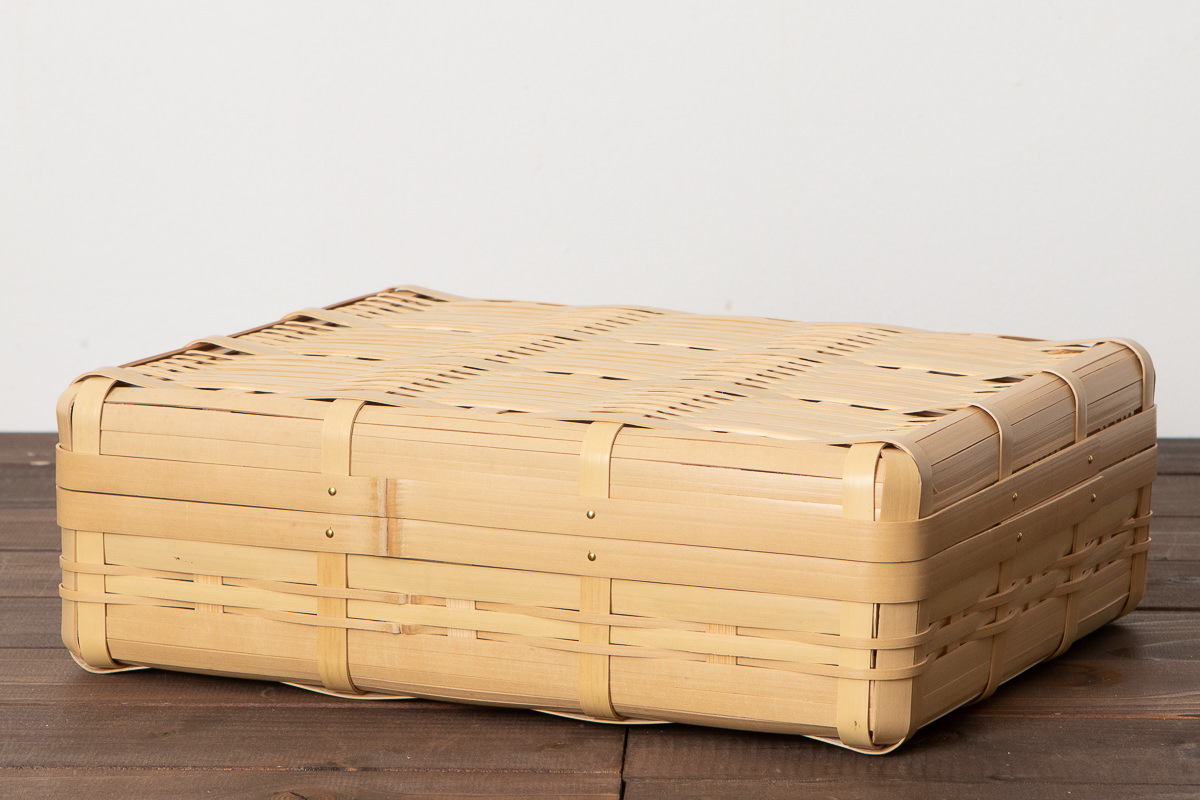
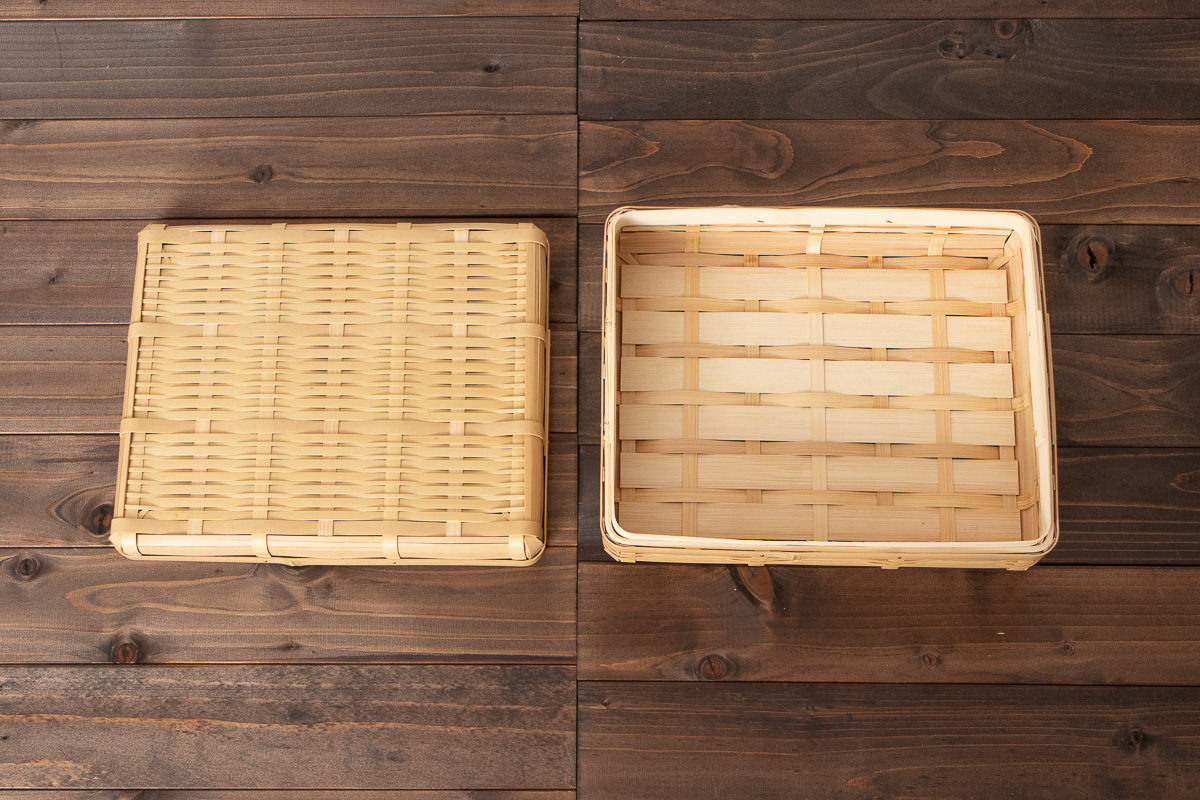

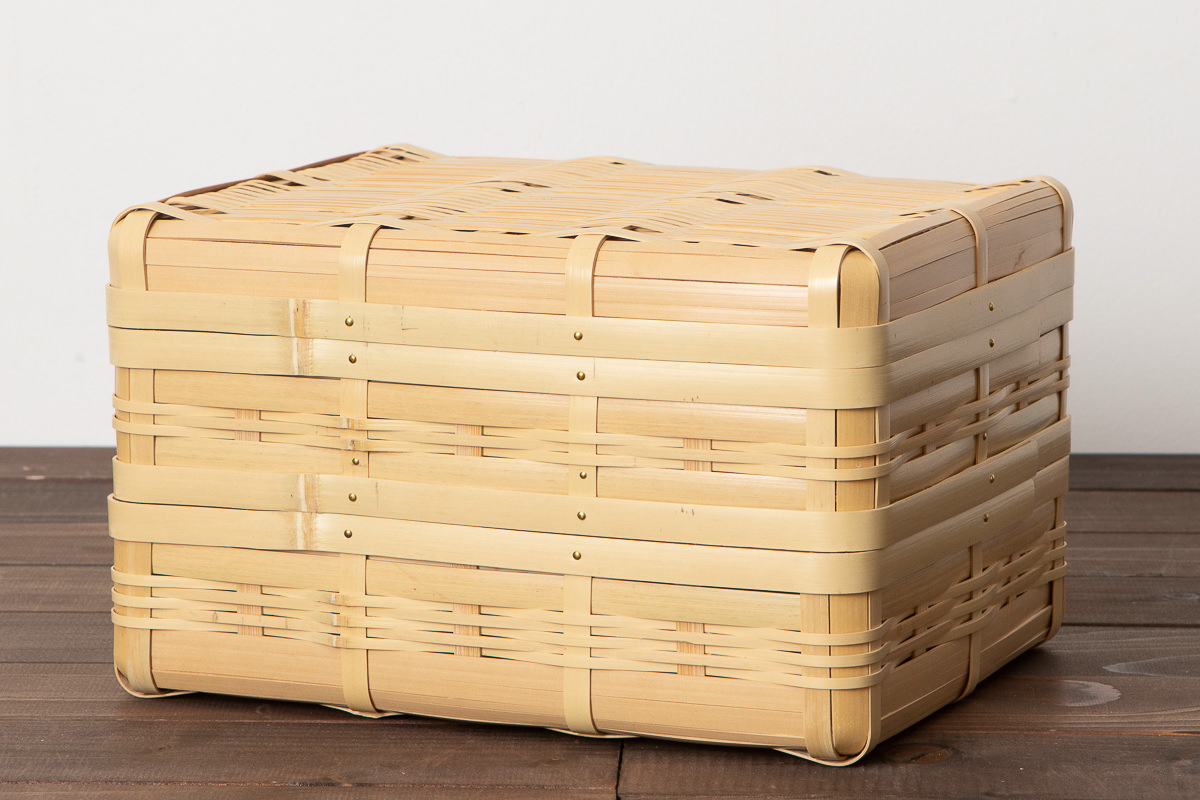

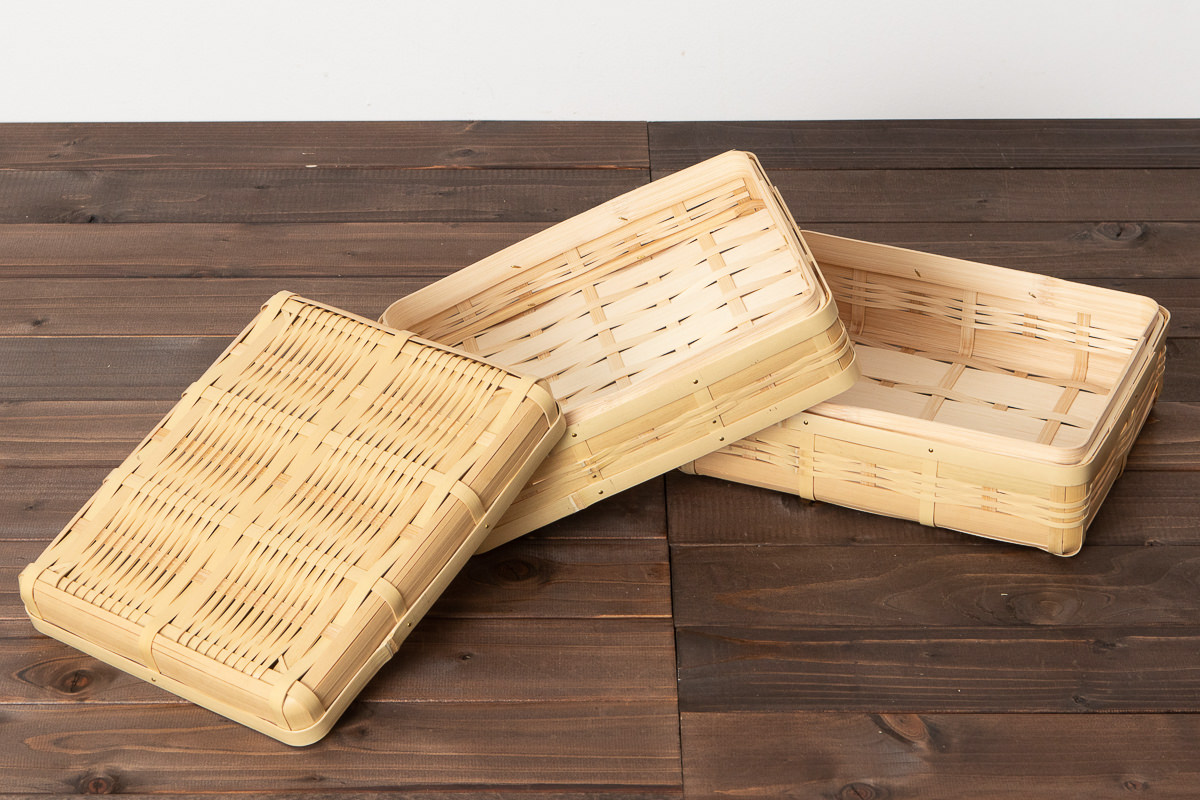
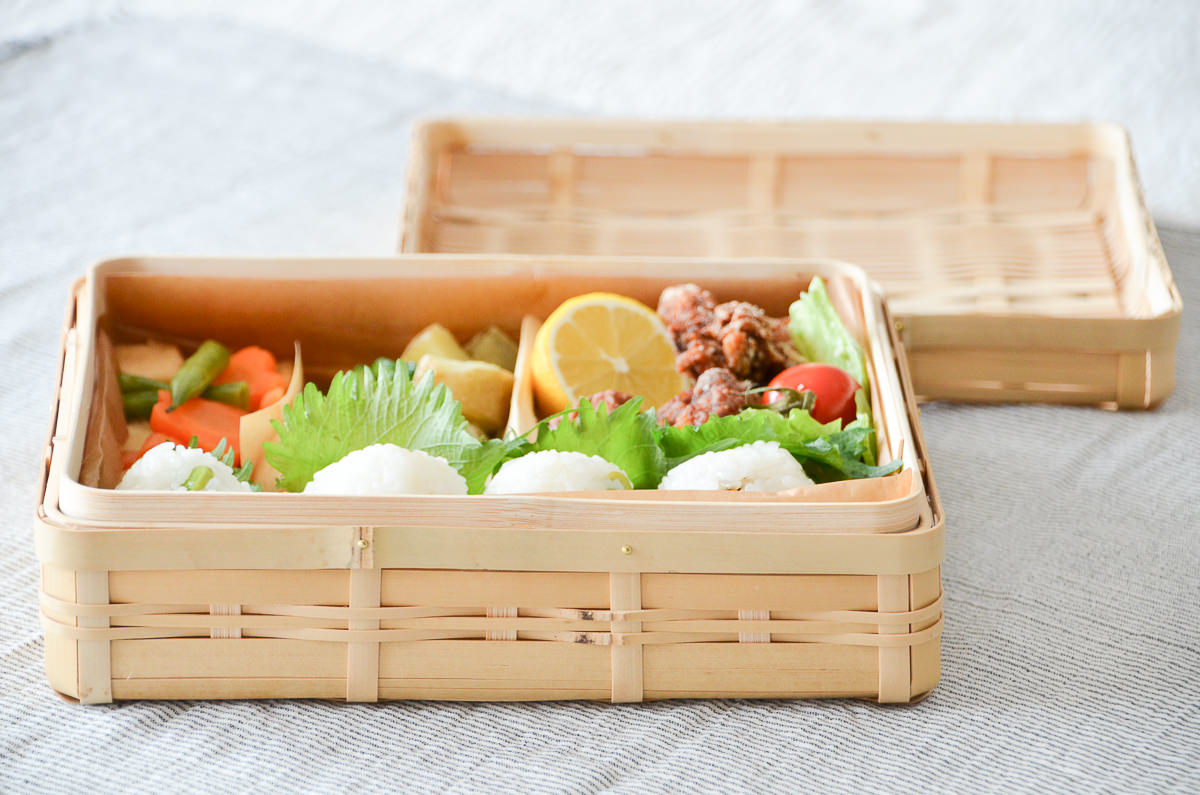
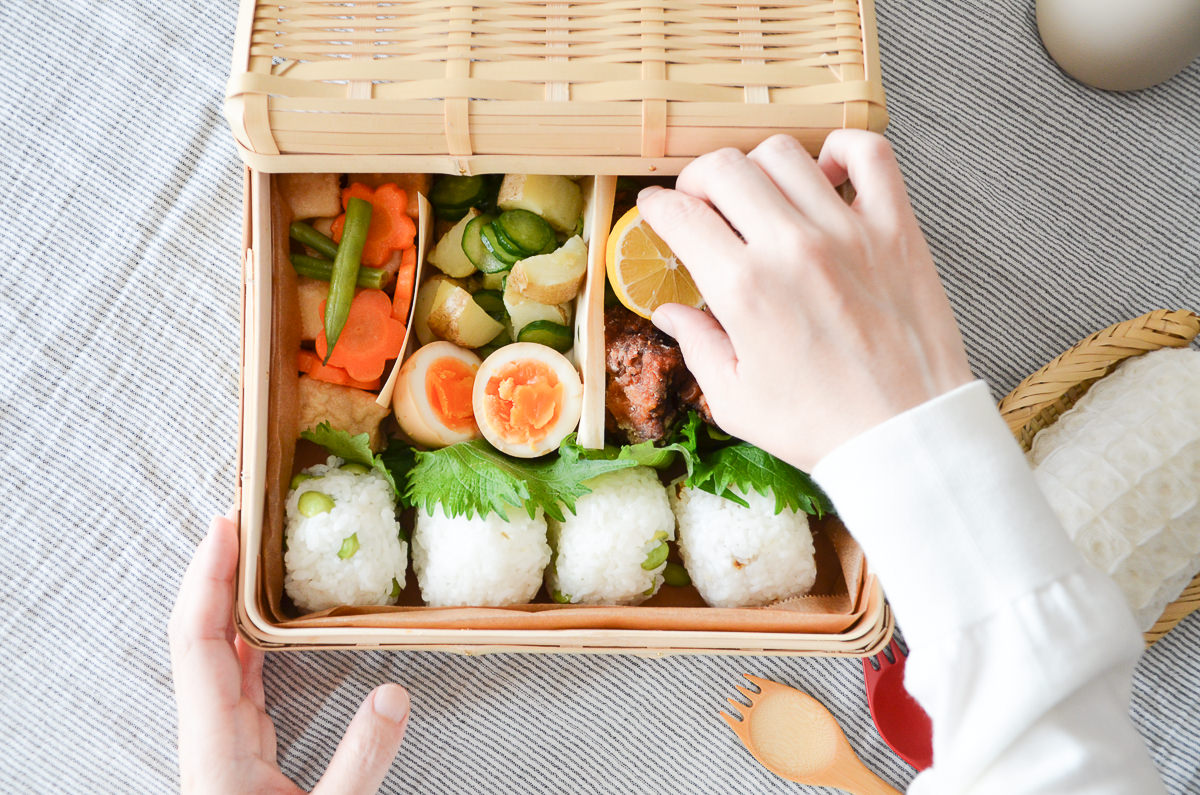
Perfect for both rice and sandwiches.
Bamboo baskets offer gentle breathability, which helps prevent moisture buildup.
If you’re packing moist side dishes, using divider cups can help keep things tidy.
(Please note that if the box is tilted, any excess moisture may leak out.)
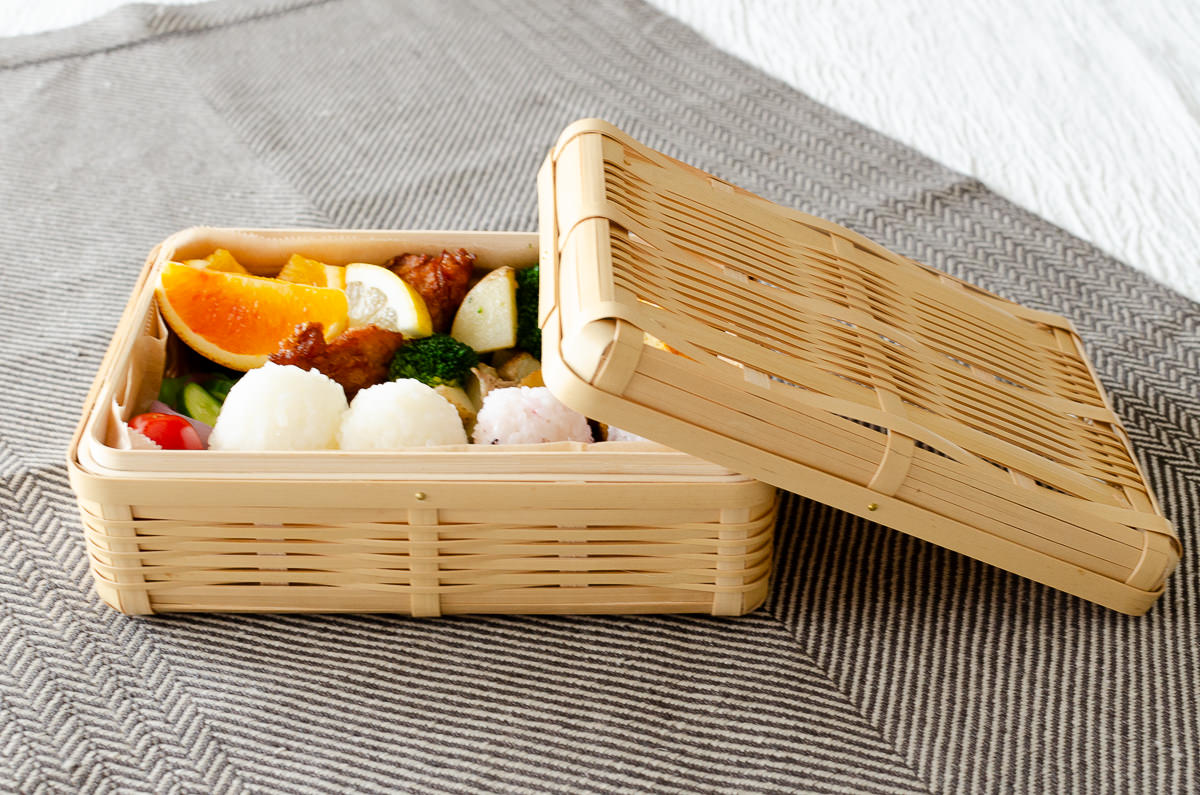
Lining the inside of the basket with cooking paper or waxed paper before arranging your food
helps keep the basket clean and makes cleanup easier.
After use, rinse the basket with water using a tawashi brush or similar scrubber,
shake off excess water, remove the lid, and let everything dry thoroughly.
If you’ve used liners or paper and the basket remains clean, washing may not be necessary.
However, moisture may still be trapped inside,
so be sure to open the lid and allow it to air-dry completely.
If oil has transferred to the basket—such as from fried foods—
you can use a small amount of mild detergent.
Just be sure to rinse thoroughly to remove any soap residue.
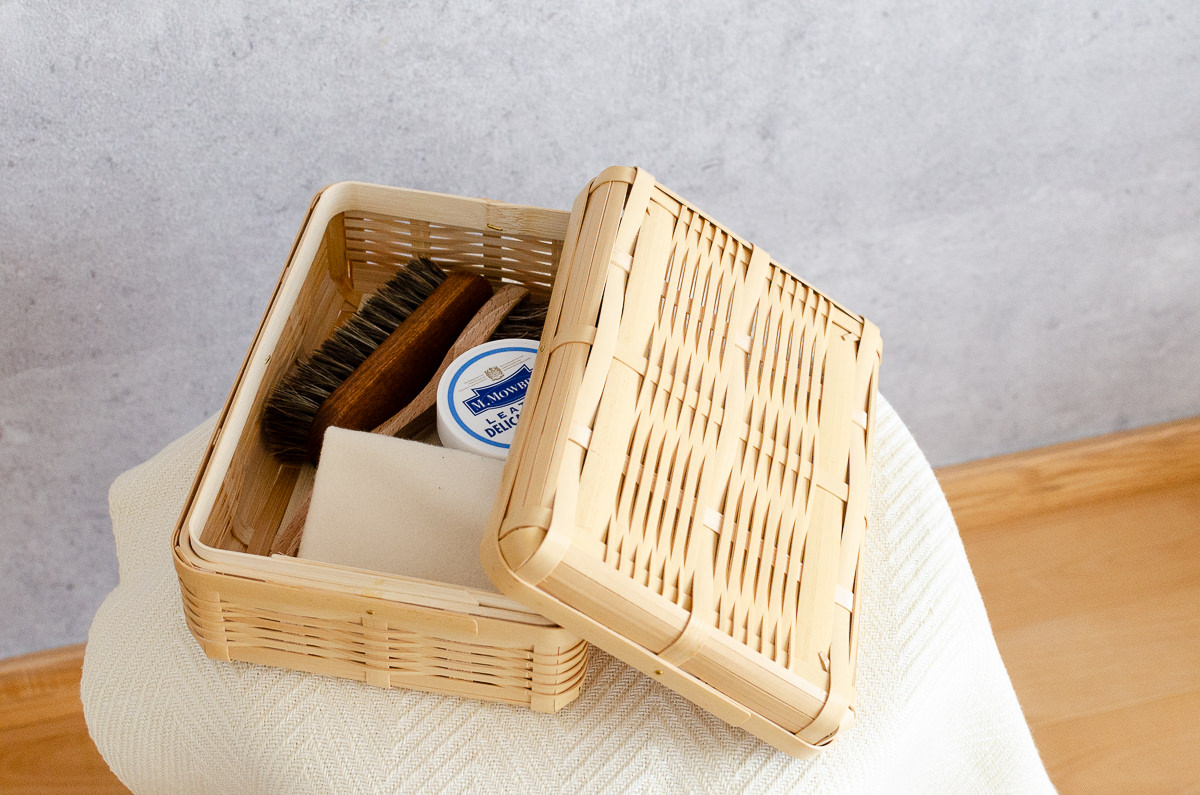
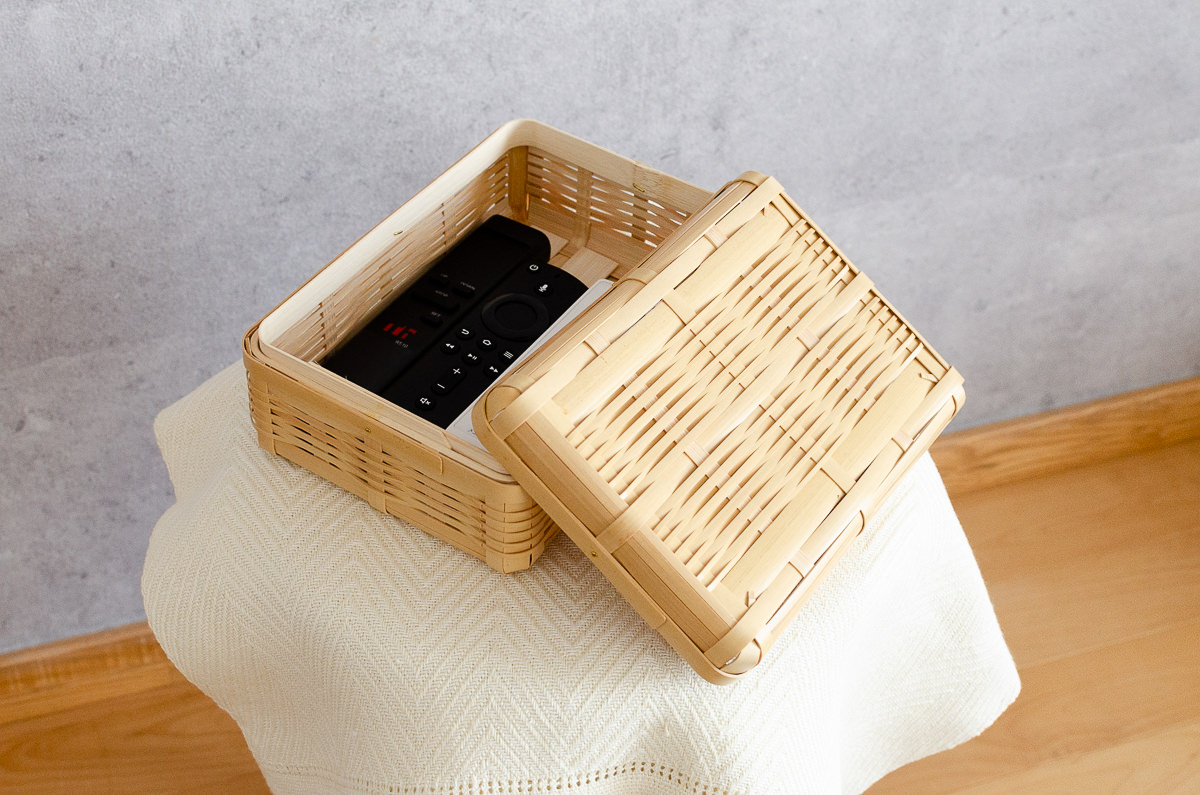
It also makes a great storage box for remote controls—keeping out dust while adding charm to your space.

With the lid closed, it has a clean, tidy appearance.
The fresh, natural look of white bamboo adds a gentle accent to any room as part of your interior décor.
Please choose the type that best suits your needs.
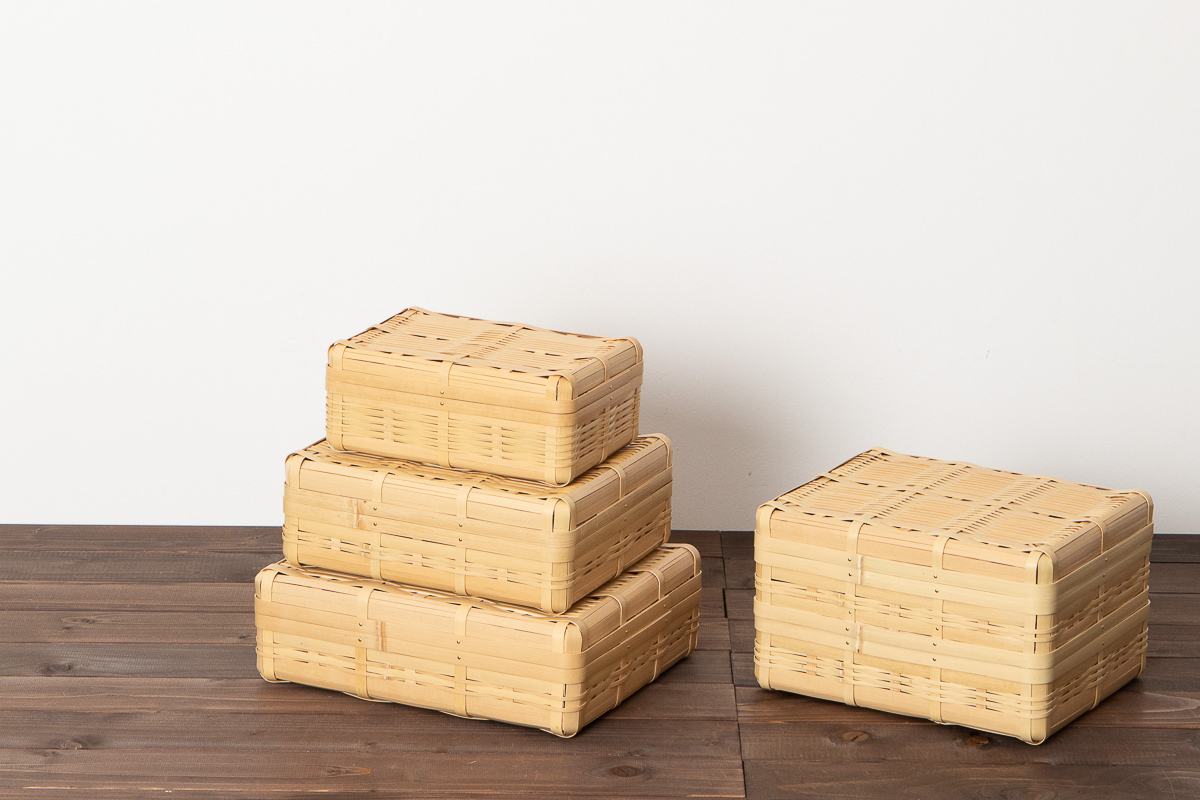
Bamboo Craft in Kagoshima
As you drive through Kagoshima Prefecture,
you’ll come across an astonishing number of bamboo groves—so many that it’s almost overwhelming.
Kagoshima is one of Japan’s leading regions in terms of bamboo forest area.
It truly is a “bamboo kingdom.”
Roughly half of these forests are filled with Moso bamboo,
known for its thick, powerful stalks that seem to radiate vitality.
Because Moso bamboo is dense and firm, it takes great effort to split it into fine strips.
For that reason, it’s often used to make utensils such as spatulas, spoons, and forks.
On the other hand, baskets like the ones shown here—
traditionally used for bento or tofu—as well as strainers and other woven items,
are usually made from Madake bamboo.
Compared to Moso, Madake has thinner walls, making it easier to produce long,
slender strips of bamboo for weaving.
Bamboo craft has long been practiced in Kagoshima.
Although the number of people involved in the craft has declined in recent years,
it still has more enthusiasts than in many other regions.
Group activities and exhibitions are held regularly, showing that the culture remains vibrant.
Whether amateur or professional,
many people in the area continue to create baskets of impressive quality and craftsmanship.
Please note:
This item ships from Japan.
As the buyer, you are responsible for any import duties, customs fees, or local taxes that may be charged in your country.
These costs are not included in the item price or shipping cost.
Please check with your local customs authority if you are unsure about any potential charges before placing your order.

